Superscript
Family Days at the Pond
Kids and Ponds: Let’s Go Outside!
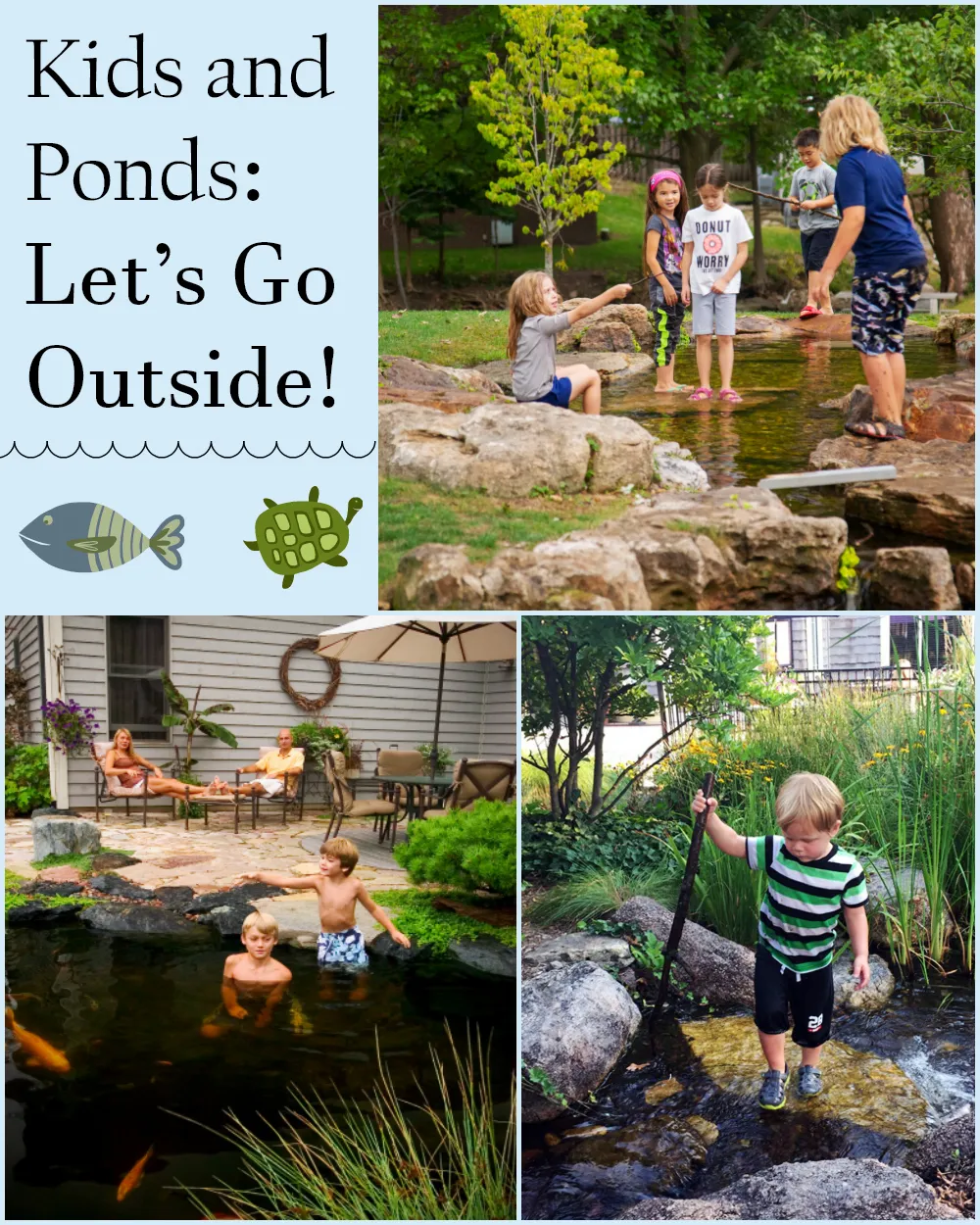
In a world of “tech neck,” social media, and constant connection, it’s far too easy for kids to overlook nature’s beauty. Beyond being a welcome change of scenery from screens, ponds and outdoor play offer a multitude of other unique benefits for young minds. And now that much of our country is practicing social distancing, it’s even more important to connect with nature.
Scroll Down Towards The Bottom for Reading:
Science & Water Activities for a Day at the Pond
- Collecting Natural Treasures From the Banks of a Pond
- DIY Easy Critter Catching Kit and Free Printable
- Sensory Play & Discoveries at the Local Pond
-
-
-
::::::::::::::::::::::::::::::::::::::::::::::::::::::::::::::::::::::::::::::::::::::::::::::::::::::::::::::::::::::::::::::::::::::::::::::::::::::::::::::::::
What’s the Problem?
Research from the National Recreation and Park Association (NRPA) shows that kids are spending less and less time in the great outdoors. On average, children only spend four to seven minutes of the day in unstructured outdoor play. Compare that to the seven and half hours, on average, that they spend in front of electronic media. The lack of physical activity could put children on the fast track for chronic diseases, including obesity. In 1980, 7 percent of children aged 6-11 were obese. In 2010, that figure had climbed to nearly 18 percent. The NRPA notes that this could create a troubling national trend for the future of conservation as well as health and wellness.
Fortunately, there are easy ways to turn this trend around – and now is the time to take action. Having access to a water feature, and the great outdoors in general, affords great ways to get kids outside and moving!
Why head to a pond?
Ponds are a fascinating place, an ecosystem in their own right. They sustain entire life cycles of plants and animals in their own self-contained space. In the summer they hum with life, providing a vibrant atmosphere to explore. From the birds and insects filling the air with song to the fish flashing by in the water and the bullfrogs calling just out of reach, they are a child’s paradise of discoveries.
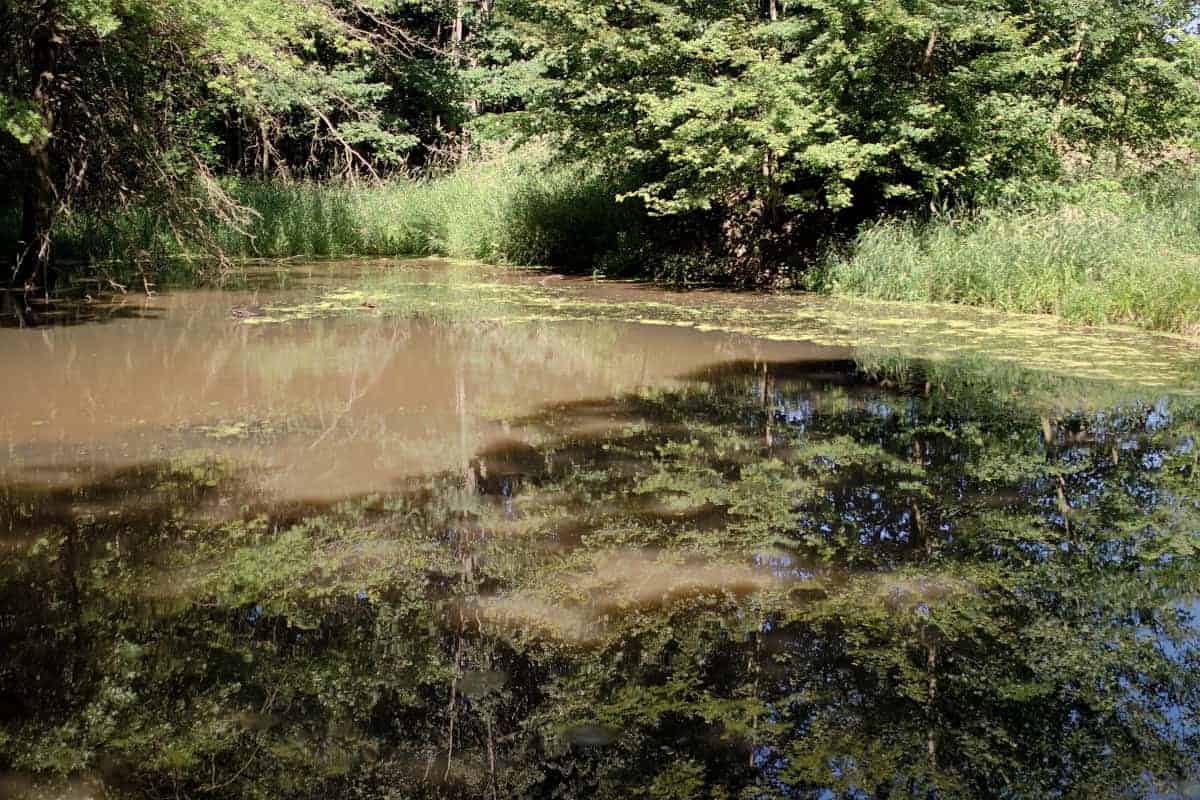
Exploring ponds with kids is also timelessly interesting, entertaining, and relaxing. Most children can find an endless number of interesting occupations at a pond. I can never believe how long my kids will spend just tossing rocks or sticks into the water. And I’m amazed at how beneficial that simple activity is: building strength and developing motor skills, making them aware of cause and effect, and introducing them to basic physics (gravity and displacement, for instance). Today, we will look at just a few ways you can experience a pond with your children, weaving education and development together with delightful play.
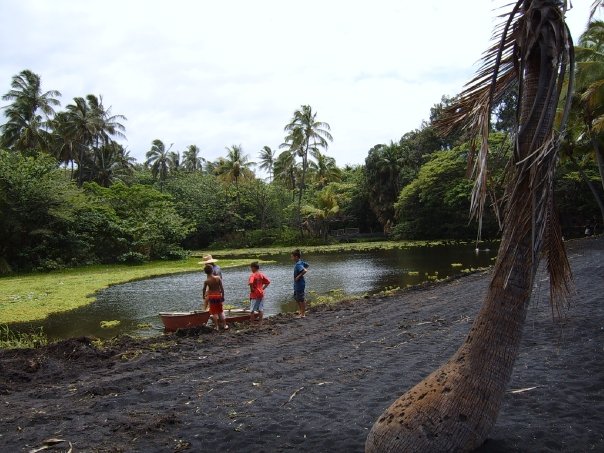
Nature Does a Body Good
Simply being in an outdoor setting benefits developing minds and bodies, especially when contact with their friends is limited – like the world’s current pandemic. According to the American Academy of Pediatrics, outdoor play allows children to use all of their senses, which in turn helps them build skills such as spatial awareness and balance. It can also help improve their attention span.
Additionally, research by The National Wildlife Federation has shown that outdoor time:
Helps make children lean and strong;
Enhances imagination and attention span;
Decreases aggression and;
Boosts classroom performance.
A policy statement from the American Public Health Association noted that people of all ages and abilities enjoy greater health and well-being when have nearby nature in parks, gardens, greenways, schoolyards, and playgrounds as well as natural landscaping around homes and workplaces.
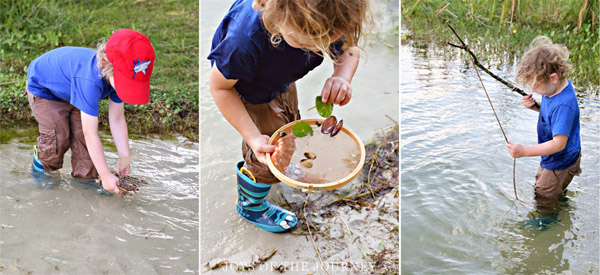
Other benefits of spending time outdoors include:
A confidence boost. Playing outside is a lot less structured than playing indoors, giving kids their power to control their own actions and adventures.
Creativity and imagination. The great outdoors allows kids to think more freely, design their own activities, and approach the world in their new and creative ways.
Responsibility. Children who are tasked with caring for a living thing, such as a plant or fish, learn what happens if it’s neglected or not cared for properly.
Unique stimulation. While nature seems less flashy and high energy than a video game, it does an amazing job of stimulating the senses. Kids can see, hear, smell, and touch outdoor environments.
“Blue Mind”
Marine biologist Wallace J. Nichols coined the term “blue mind” to refer to the calm, peaceful sense of happiness that is triggered by being in or near water. Being around water gives our overstimulated brains and senses a rest. Creativity thrives in this relaxed state, as the brain is able to make new and unusual connections because it is not overly distracted by visual and auditory stimulation.
Ponds Can Become A Nature Play Classroom
In 2013, Kaneland High School in Maple Park, Illinois, transformed a previously unused outdoor courtyard into a koi pond with help from Aquascape. Over the course of three days, members of the school’s Student Council, FFA, and Science Club worked to turn the space into a stunning pond.
During the school year, the pond is maintained by students in the school’s horticulture classes, who feed the fish, check the pond’s water level, and tend to the plants. They’ve even added enhancements to the pond area, including additional water plants and building a runoff to help direct water that was coming down from the school’s roof.
Kaneland staff credit the project for not only demonstrating commitment to the school but showing how community partnerships can provide valuable learning experiences. Kaneland’s pond was even featured on an episode of Pond Stars on the Nat Geo Wild network.
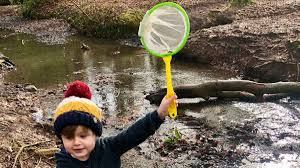
Don’t Forget Fun
There are so many things to love about ponds. There are fish to feed and frogs to find. If they move quietly, they might just discover butterflies resting gently on the plants surrounding the water. And on a hot day, there’s no better feeling than taking off your socks and wading right into the pond.
Here are some ideas we love for fun in the great outdoors.
Have a treasure hunt. Make a short list of things for your children to seek outside. You could even tailor the list to include things found around your pond. How about a plant that grows in water, a shiny rock, or a fish? As they search for items around the pond, they’ll naturally take in its other cool features.
Identify plants and animals. Go online and print out pictures of the plants and animals that make their home in your pond. Then head outside with your child and match the pictures you printed to the living things in and around the pond.
Photograph nature. In this instance, technology isn’t totally banned. Have your child use a camera, or even the camera on your phone, to take pictures of the pond and the nature surrounding it. Explore how lighting impacts the photographs, and have some fun playing with the different camera settings.
Create art. Claude Monet was famously inspired to paint water plants – why not your child, too? Bring art supplies outside and encourage your child to sketch or paint the pond.
Try for a “Green Hour”
The National Wildlife Federation encourages families to commit to a “green hour” every day in which children play and learn outdoors in nature. Regular positive experiences with nature also help children develop a lifelong concern for wildlife and the great outdoors.
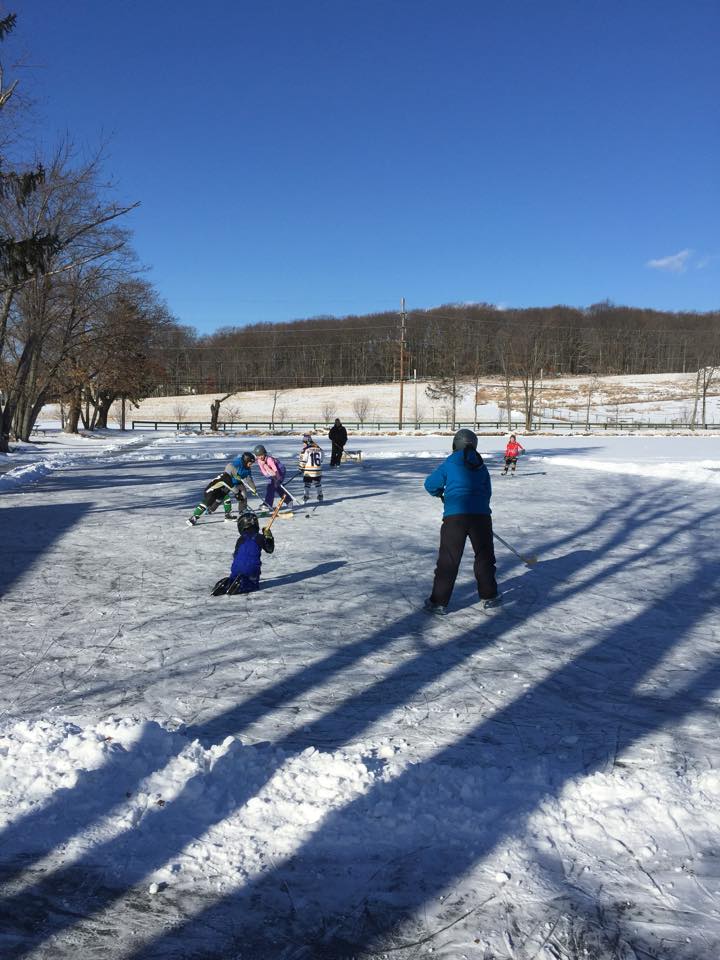
Safety First
Pondless Waterfalls are a perfect choice for families with very young children. They allow children to enjoy nature in and around the waterfall/stream – birds love to bathe in it and frogs will visit! – without the safety concerns of a pond. A pond can always be added to the waterfall once children are older.
During this time of pandemic concern and social distancing, be sure your kids spend time in nature. Your backyard is a great place to start!
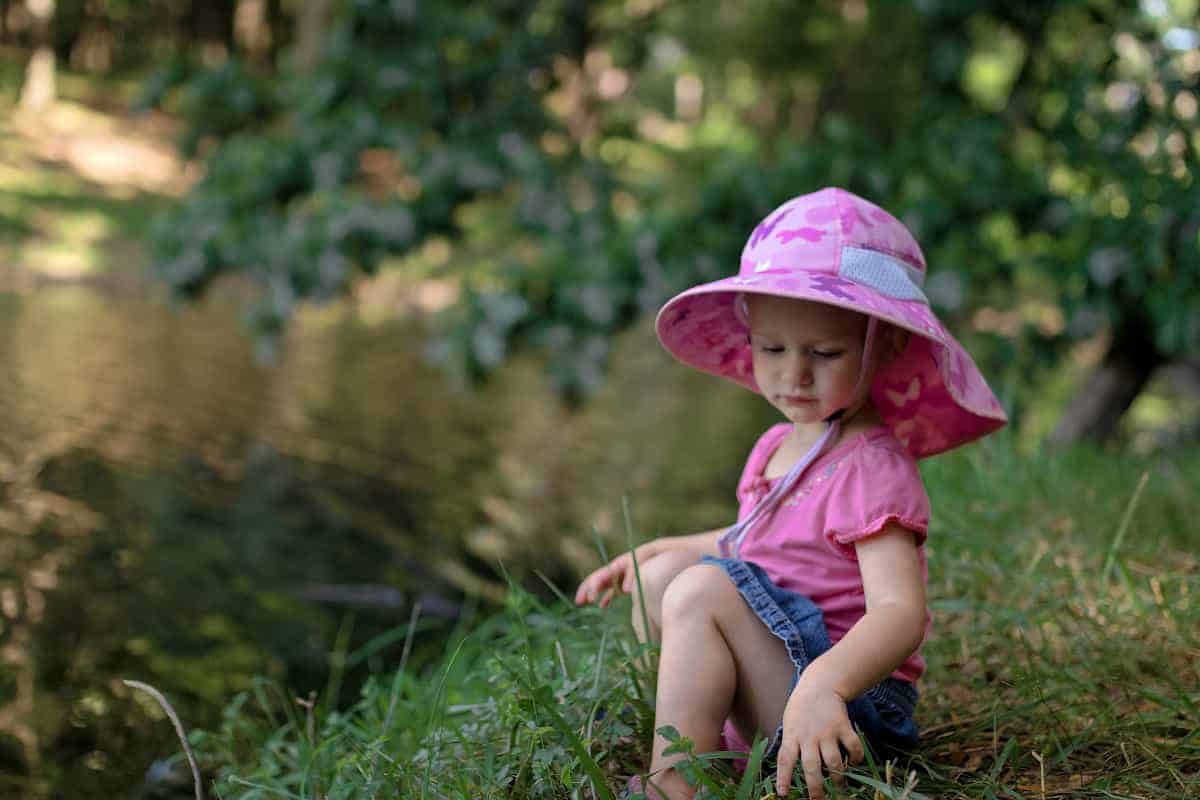
A note on pond safety
Before we get started, I’d like to mention some safety guidelines. Any time water is involved, we have to be extra conscious of our children’s safety. Water is such a fun thing that few children understand its danger. And unlike swimming beaches, ponds often have slippery mud or grassy banks that can drop abruptly into deep water. Teaching children to swim is the number-one prevention to drowning accidents, but even that isn’t a guarantee of safety. Never leave children unattended near any water, especially a deep body of water like a pond.
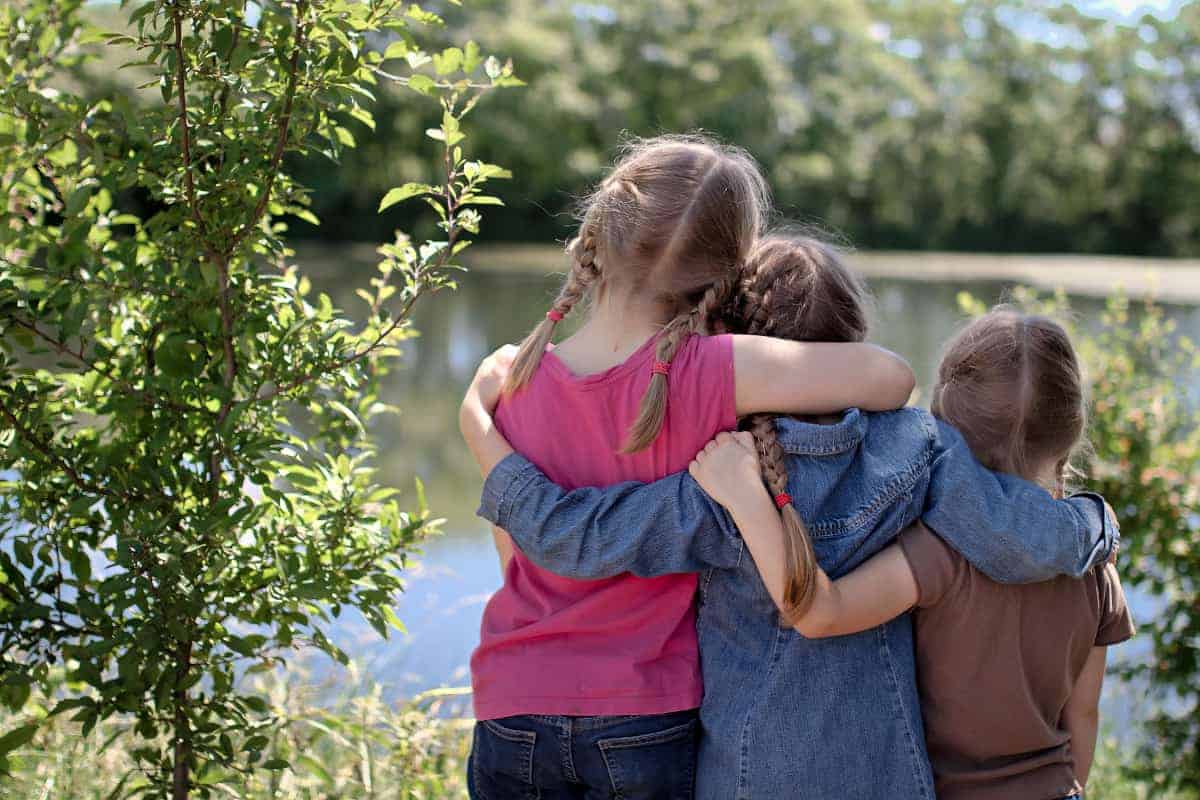
Be safe together!
If you are comfortable allowing your children to wade in the water, make sure you have carefully checked out the wading area yourself for dangers like slippery mud and sharp drop-offs. And even if you have instructed your children to stay out of the pond, we should be aware that accidents happen and a child can slip and fall into the water in an instant. Stay close and focused on your children, adventuring and playing together. Exploring ponds with kids should be fun and safe.
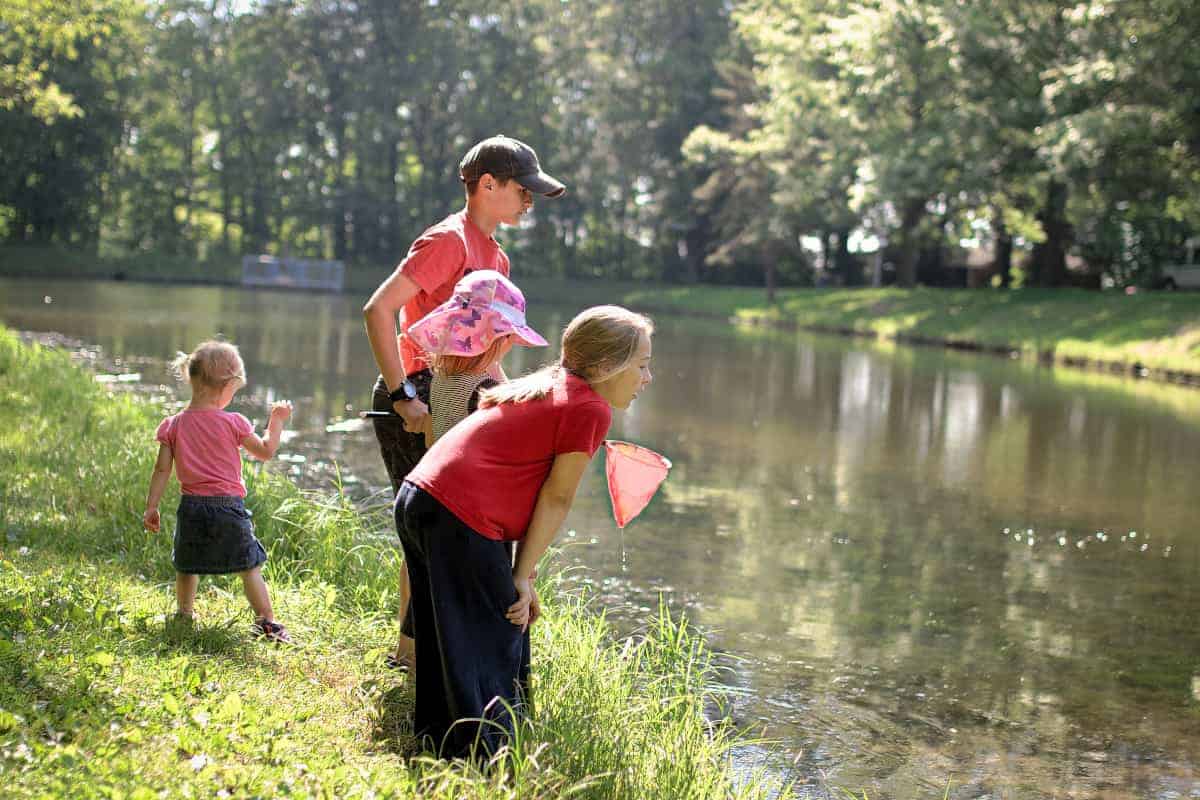
Teaching nature skills
To start off exploring a pond with kids, simply walk around the pond. Talk before you start about how everyone needs to use their “nature skills” to explore the pond area. These skills include walking quietly, speaking quietly, and trying not to disturb the wildlife around you. We always have to work on sharing our discoveries quietly—the first child to yell they saw a goose will probably scare off the whole flock! This is also a good time to teach children how to study nature without disturbing it, to observe but not take, and to show respect for the natural environment surrounding them by being careful where they step and what they touch.
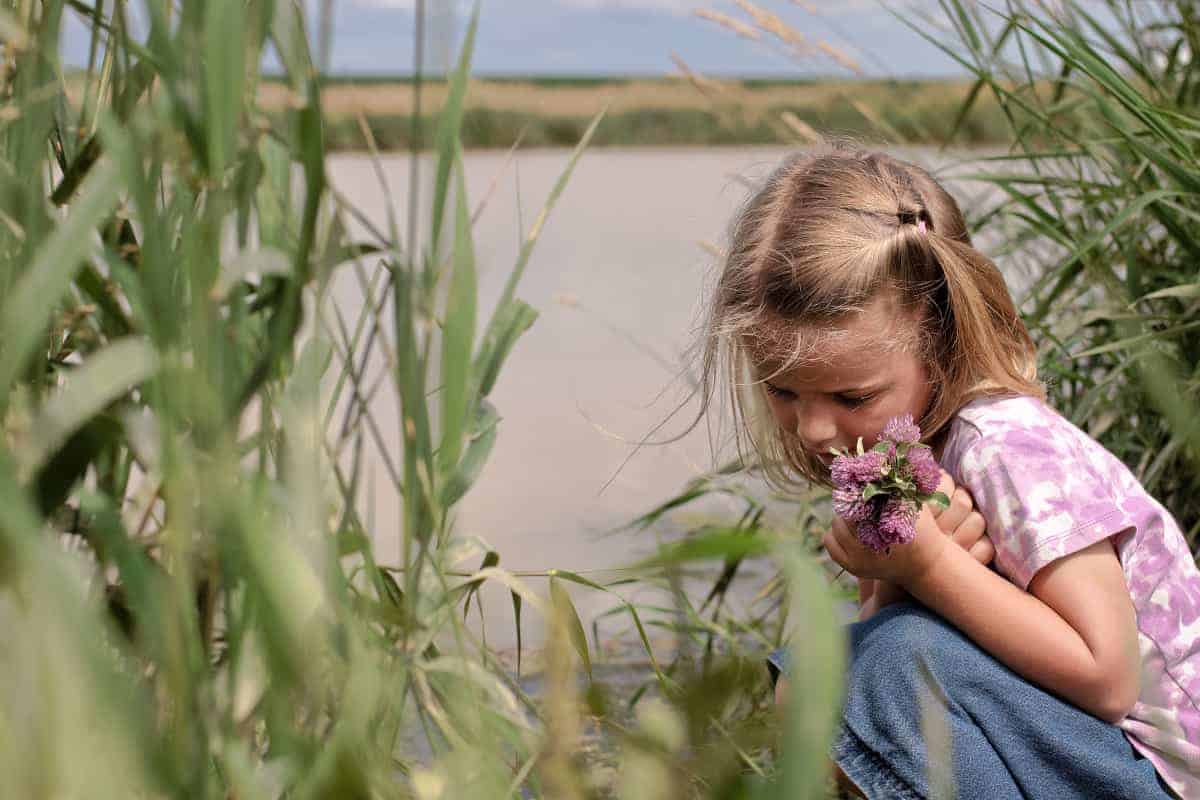
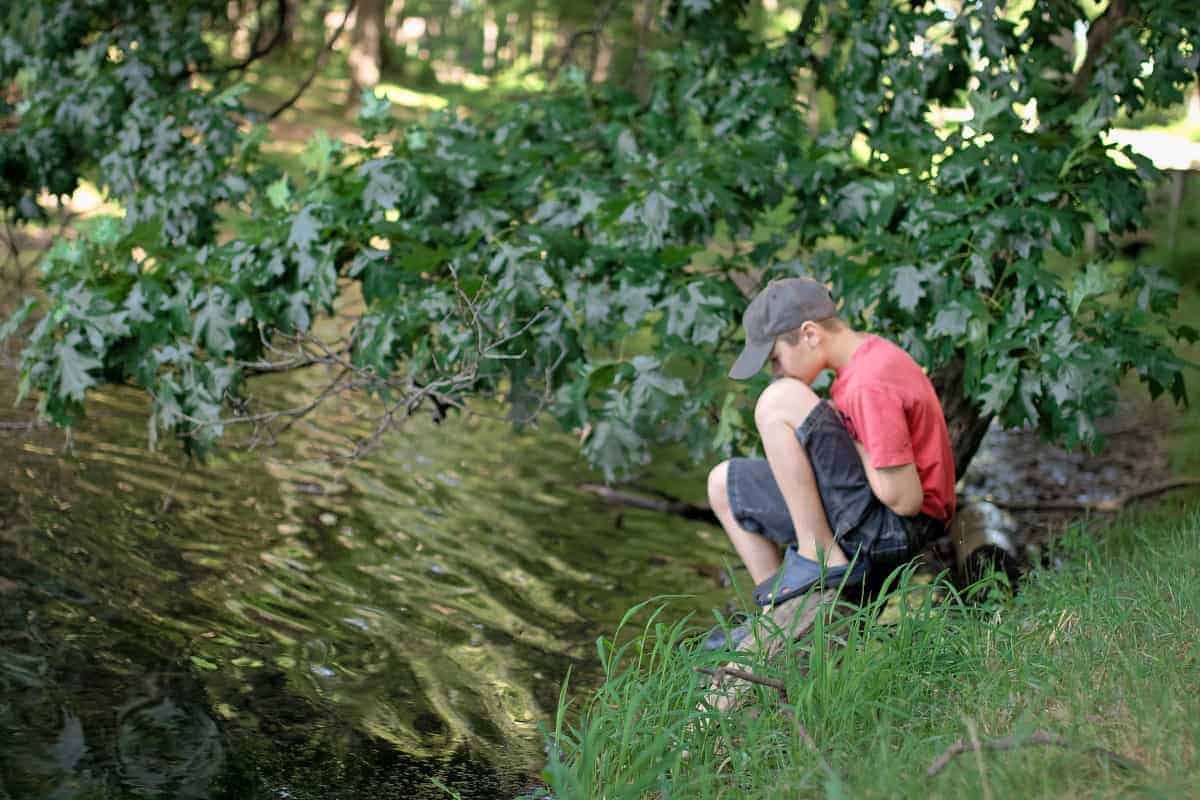
Sensory exploration
Exploring a pond with kids provides a great sensory experience. It’s easy to get started by asking questions involving the senses. What do you see? It’s like an amazing game of “I Spy.” Do you see those wildflowers on the far bank? Can you spot that turtle out sunning on a log? How many frogs can you count? Oh, no, one just ducked underwater!
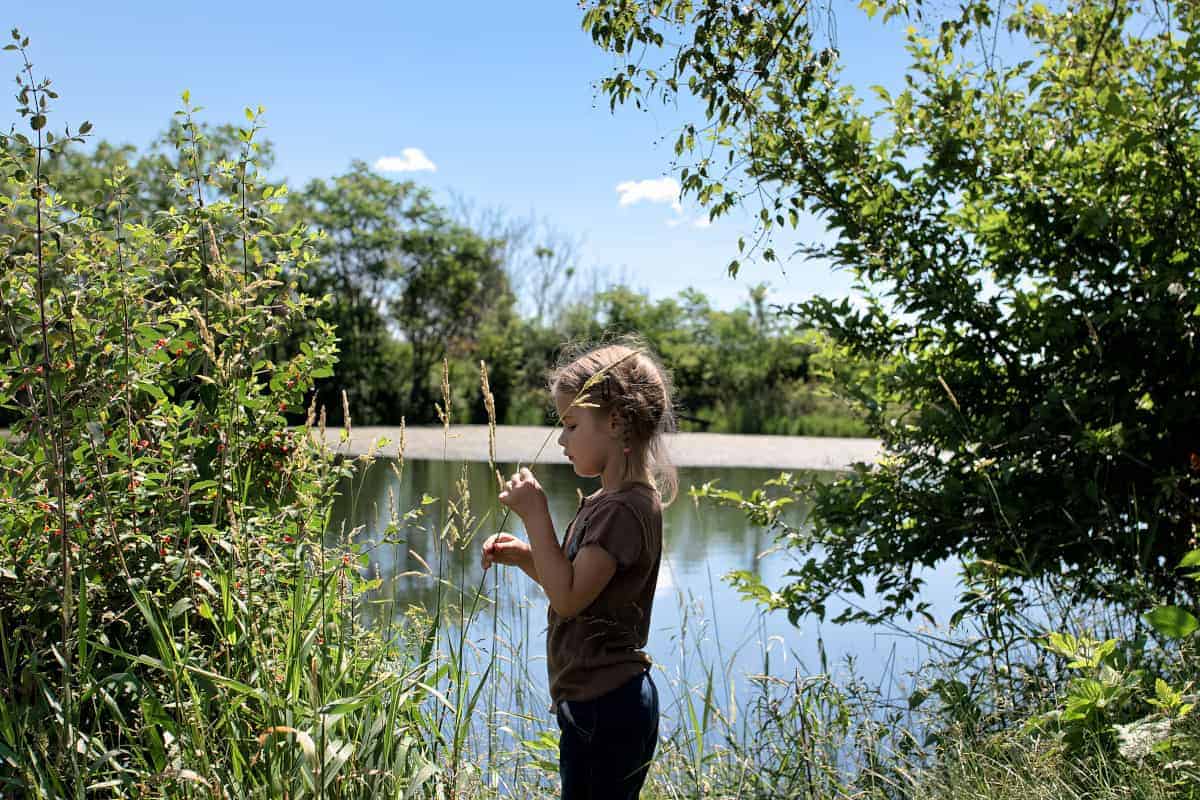
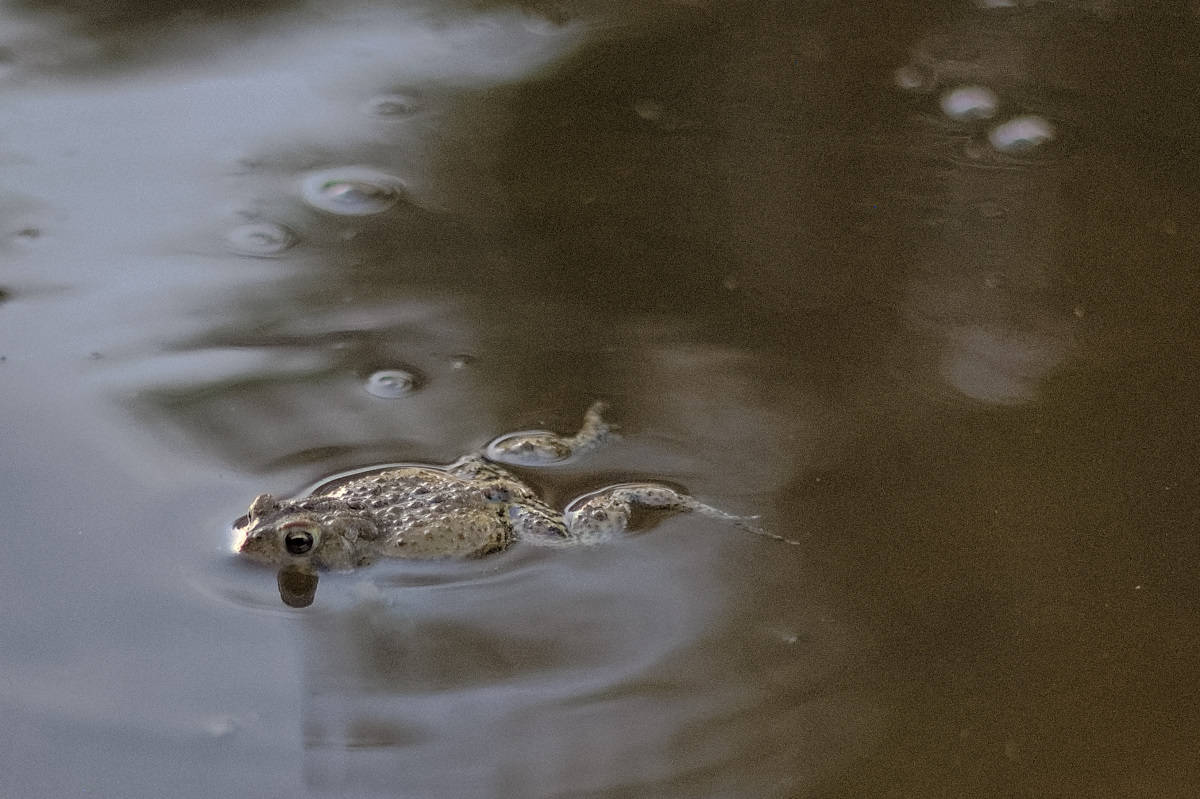
Hearing and Smelling
Observing the natural atmosphere of the pond moves quickly to hearing. Do you hear the birds singing? The bullfrogs calling? The wind whispering through the tall grass? The buzzing of the insects? And then there is always smelling—and if the pond you are visiting has the smell of stagnant water, your children are sure to notice it! But you can also smell wildflowers and a fresh breeze. Honeysuckle and freshly cut grass. I love how much my children will get into talking about all the details they notice.
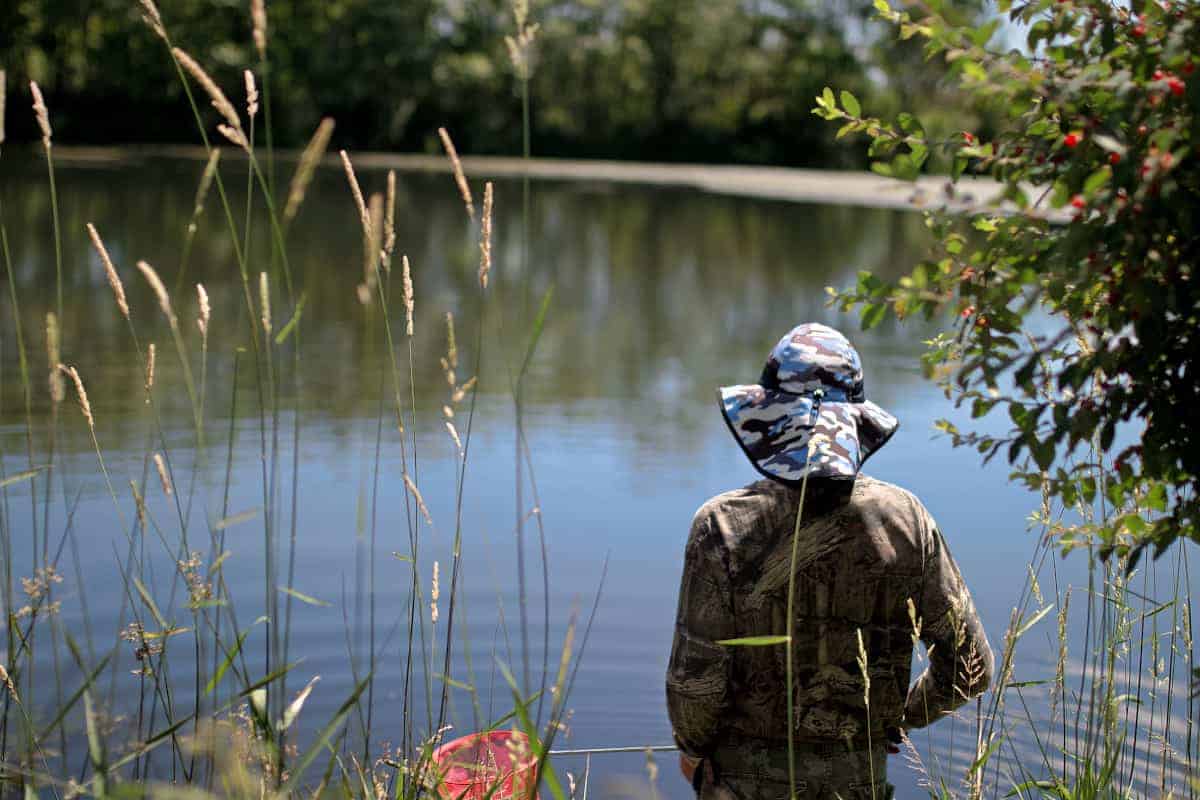
Unforgettable sensory experiences
When exploring ponds with kids, there are countless ways to experience the natural world. How many things can you find to touch? From the smooth leaves and raspy blossom of the cattails, to the silky water and slippery plants in the pond, to the slimy skin of a frog and the soft whisper of a dropped bird feather, there are a multitude of things to feel around a pond. (Of course, unless you have the owner’s permission to pick things, make sure you give careful instruction about not picking any plants or disturbing the environment. Leave it unspoiled for everyone to enjoy!) Touching pond creatures might stretch the sensory comfort zones of some kids, but if you have the opportunity to let your children touch a frog or a fish, it will be a sensory experience they won’t forget!
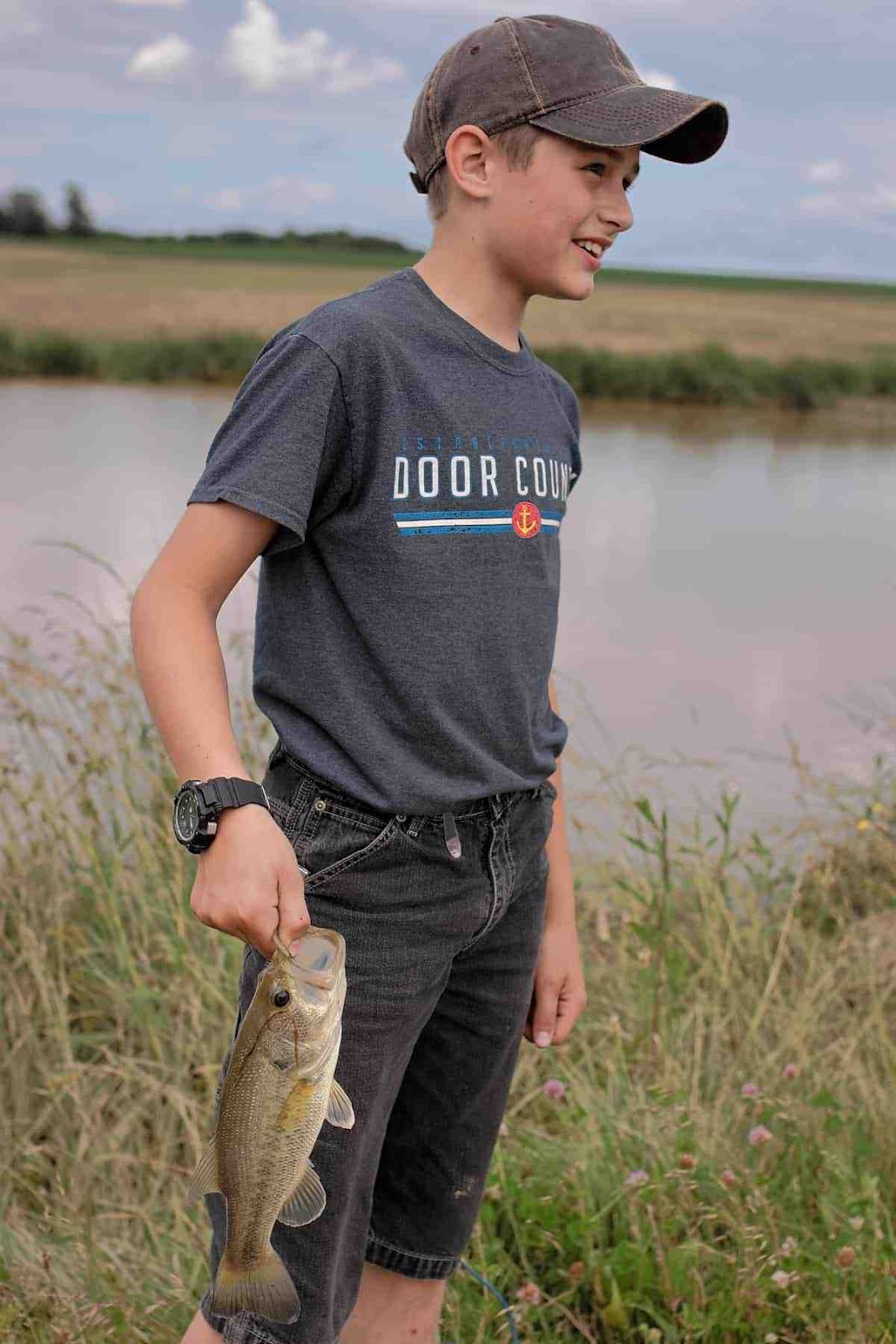
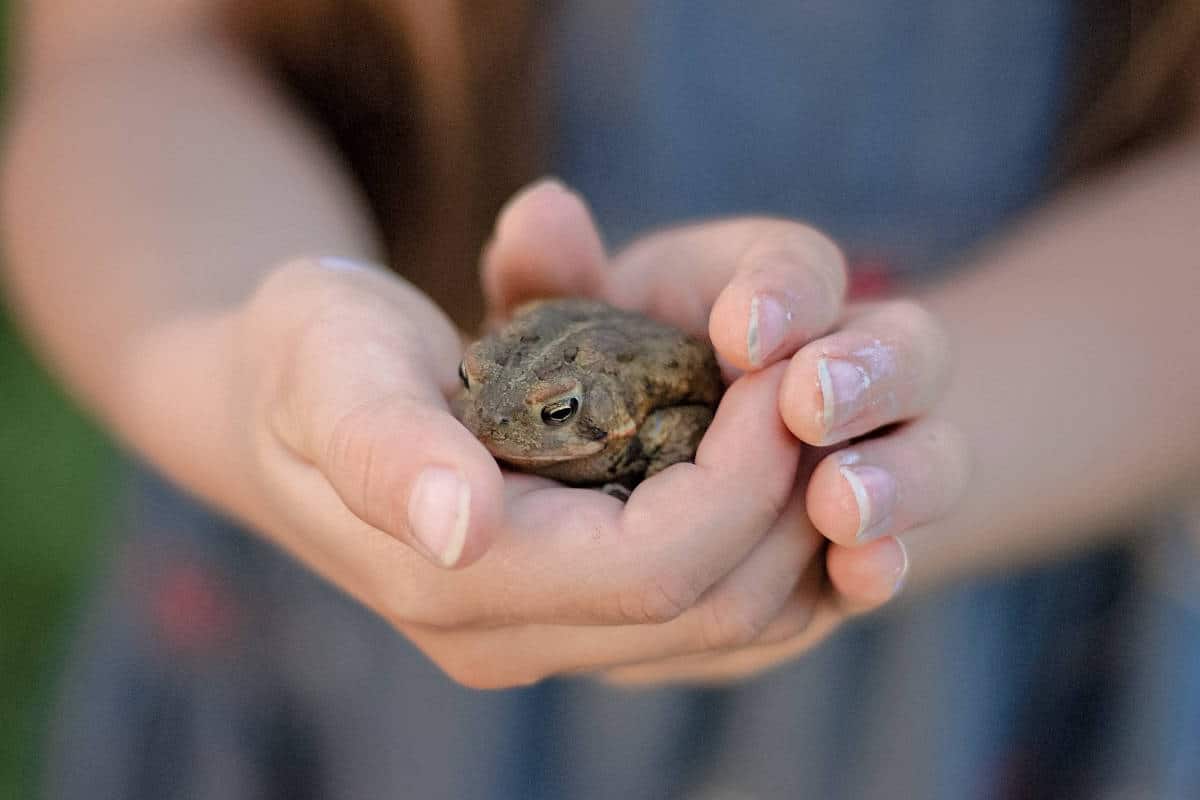
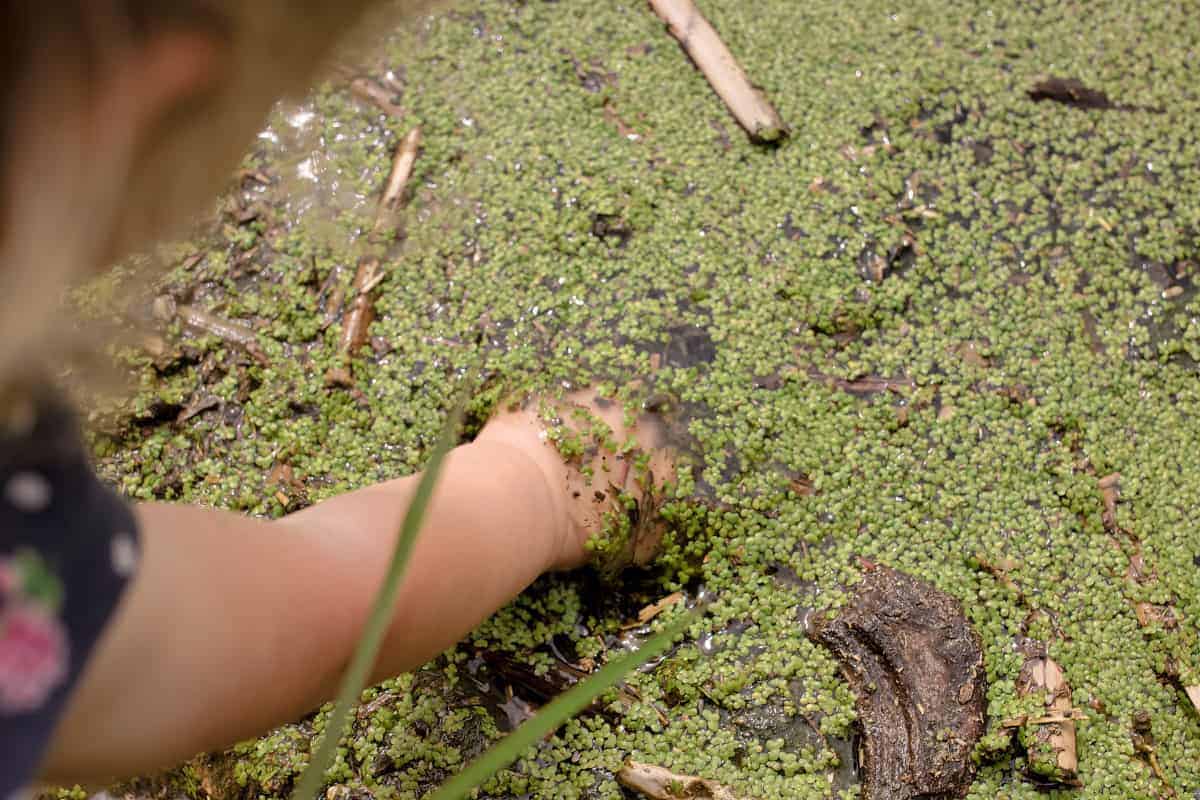
Hands-on adventures
Getting wet and dirty is part of learning about the pond environment, too. If my children are within reaching-distance of water—any water—they are sure to get wet! It doesn’t matter the temperature or what they’re wearing. If we are going near water, I just plan on them getting soaked. So, if the pond you are visiting is wading accessible, wear some water-appropriate clothes and footwear. Bring some buckets, a net, a magnifying glass, and explore a pond with kids up close!
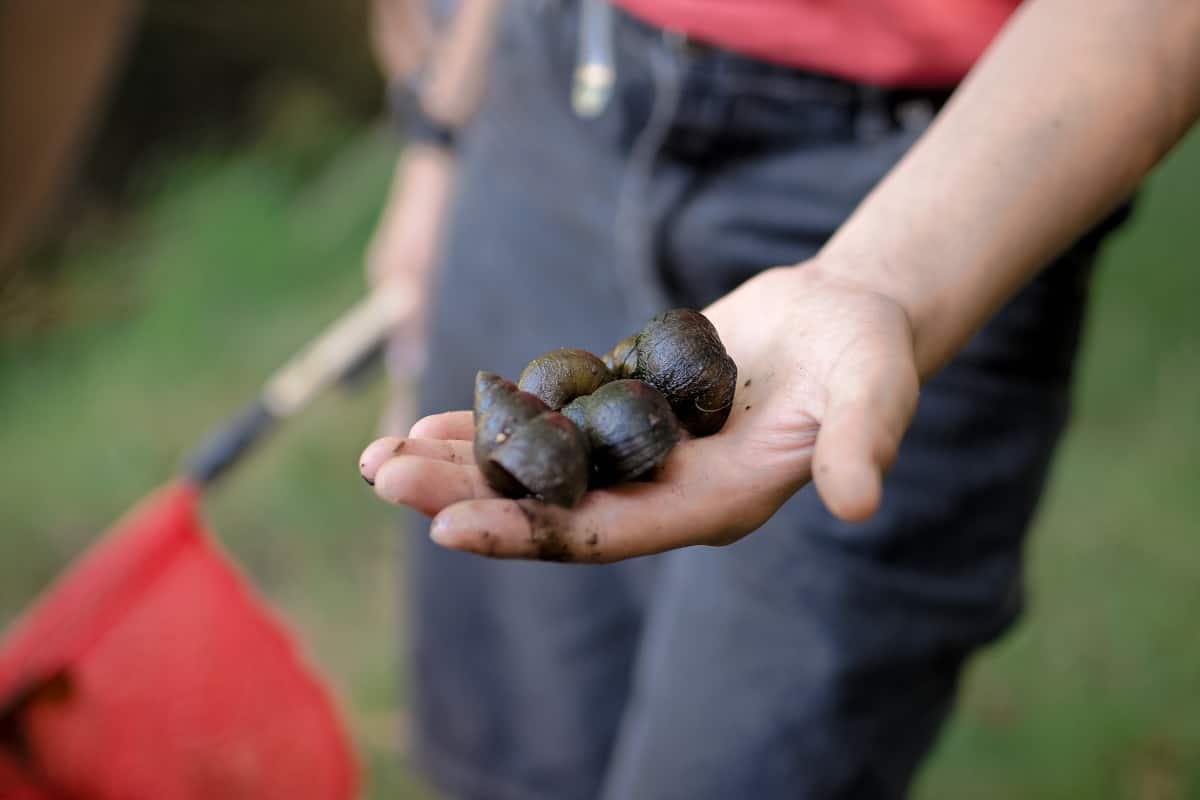
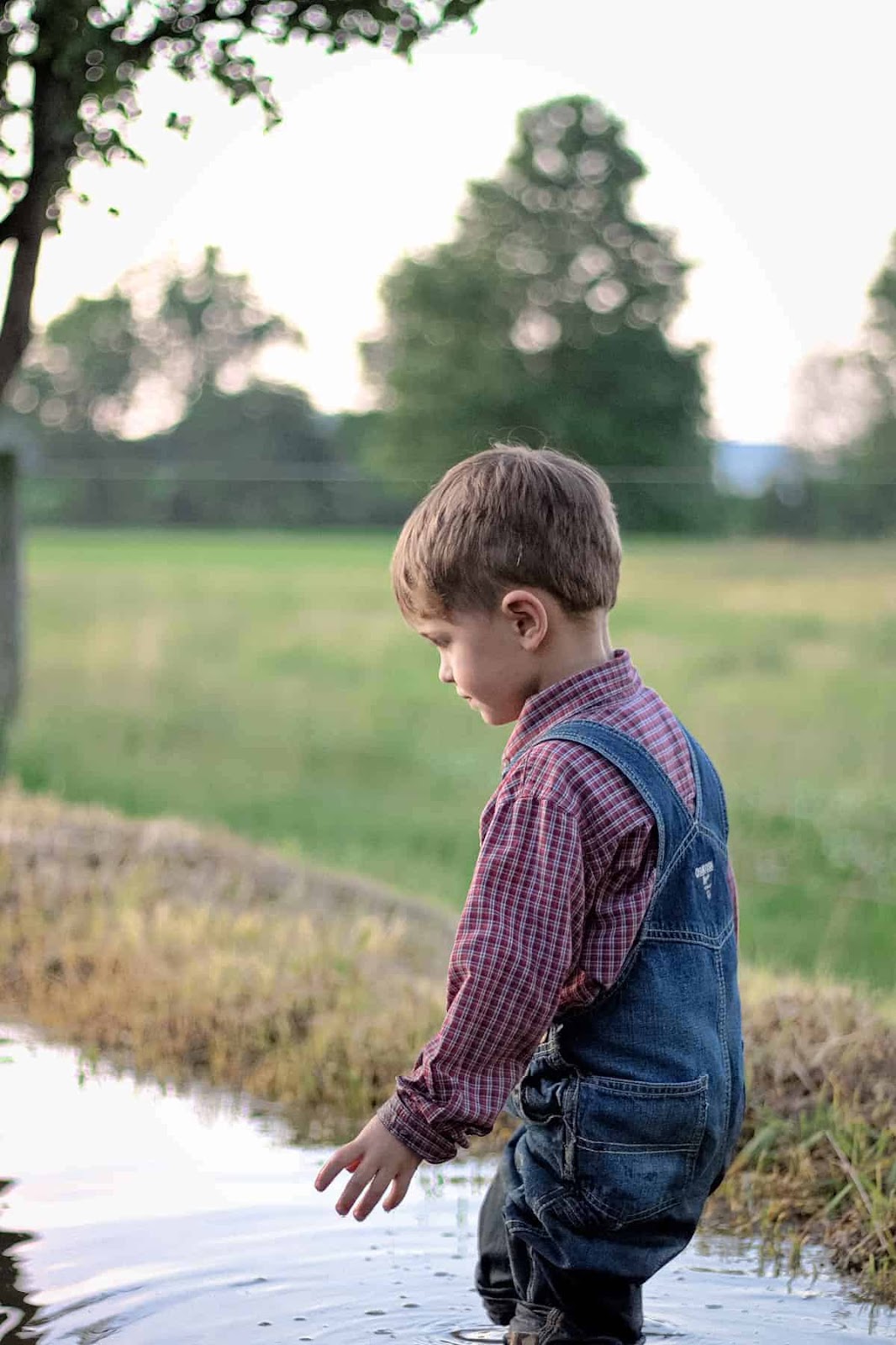
Exploring a pond with kids is a hands-on activity. If you have an adventuresome child with quick reflexes, they might be able to catch a bullfrog or net a minnow to examine. These are good opportunities not only to study creatures up close, but also to teach our children how to handle them and to release them safely back into their natural environment. The minnows can’t breathe air, so we have to observe them in the water. The frog is slippery and likes to jump, so we have to hold it securely but without squeezing it.
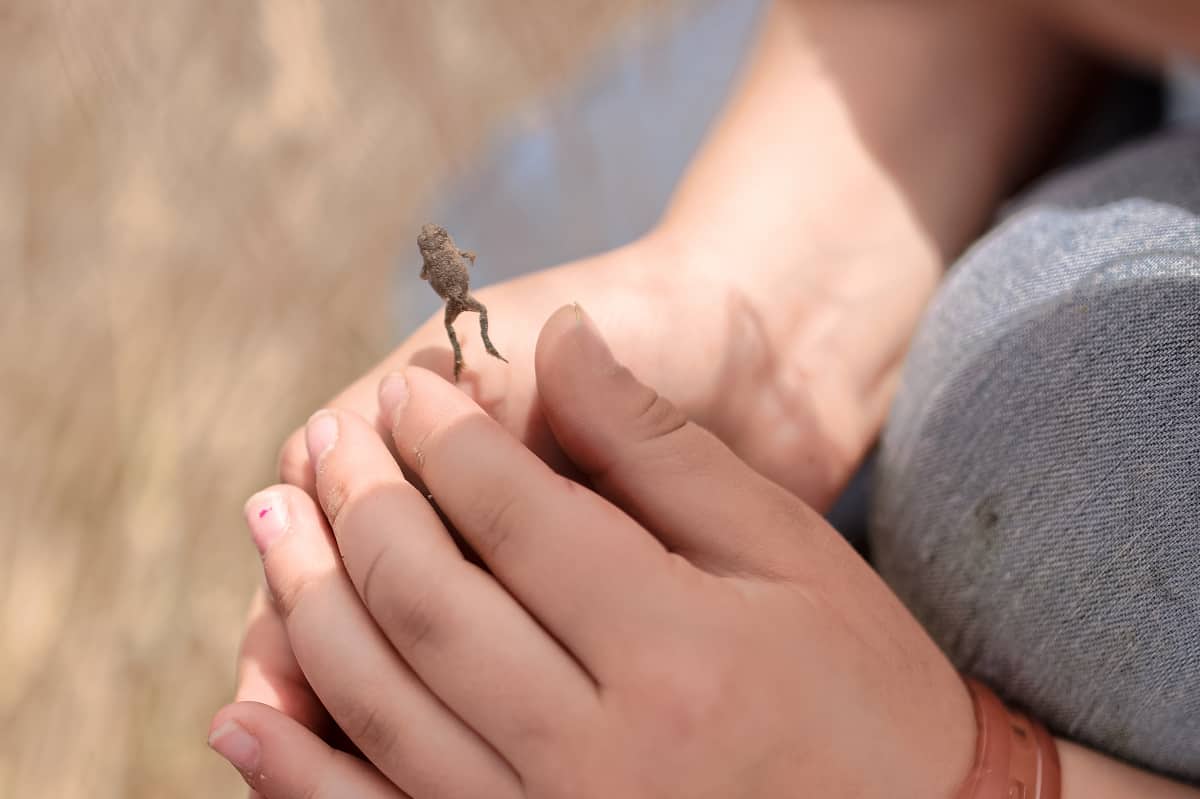
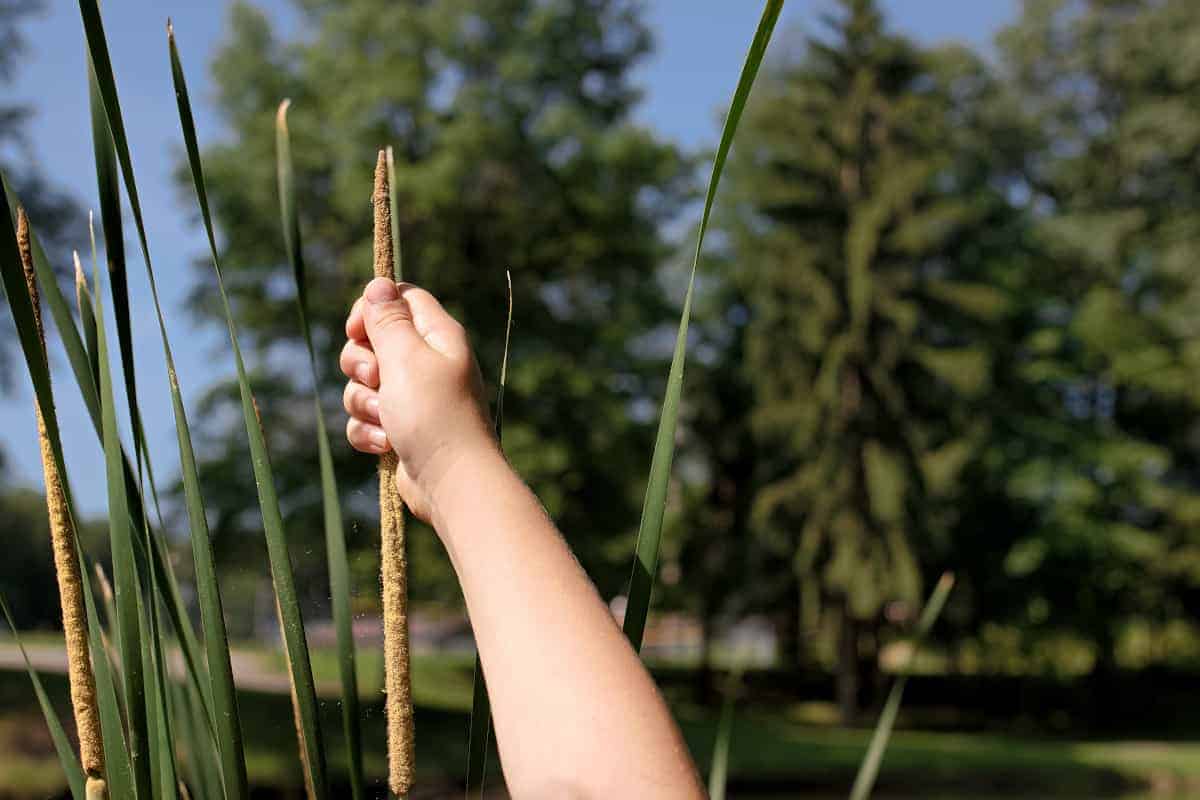
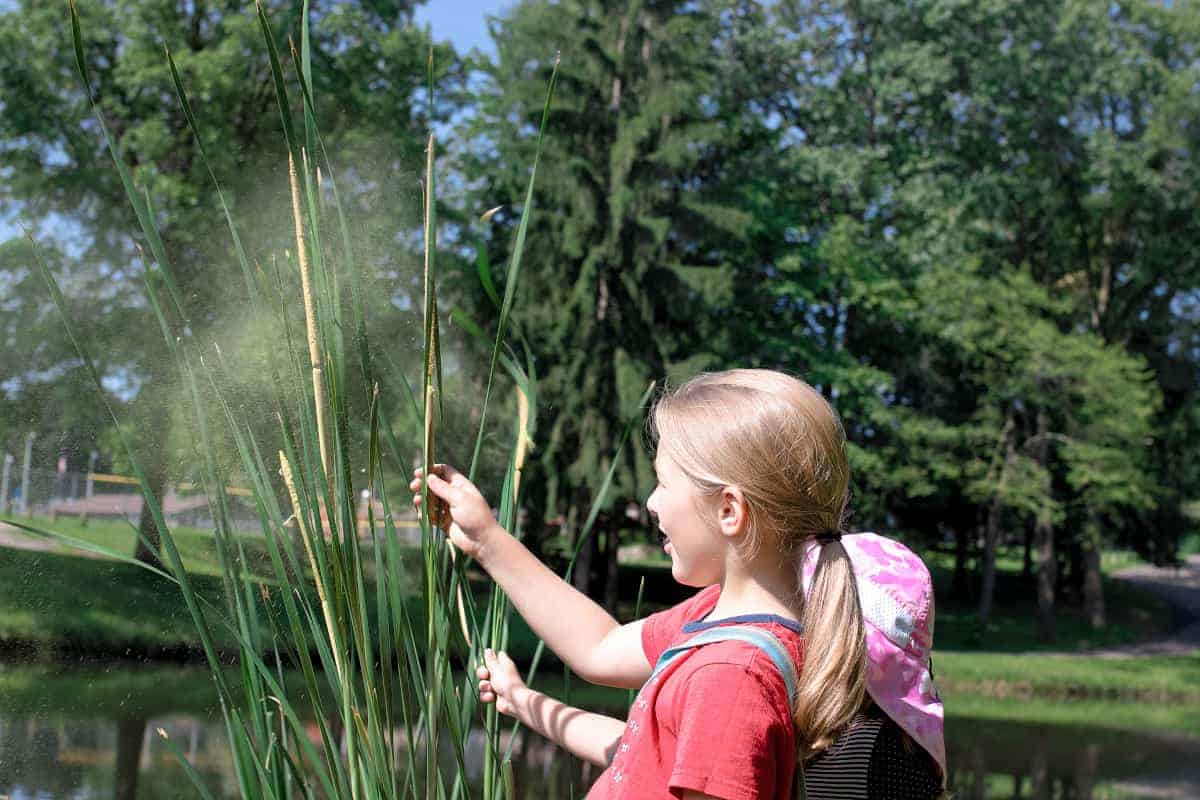
Tadpole science project
In early summer, tadpoles are one of the easiest and most fun things to catch and study. Find a shallow still area at the edge of a pond in early summer, and you will probably see dozens of tiny black blobs wiggling around in the water. These are tadpoles—baby frogs who will develop before your eyes! If you have permission from the pond’s owner, scoop some up in a bucket and you will have a hands-on science project. Bring them home, feed them, and watch them grow! Before long, it will seem unbelievable that these miniature frogs grew from those funny wiggly creatures you caught in the pond. For more information, we’ve got a great post on raising tadpoles with kids.
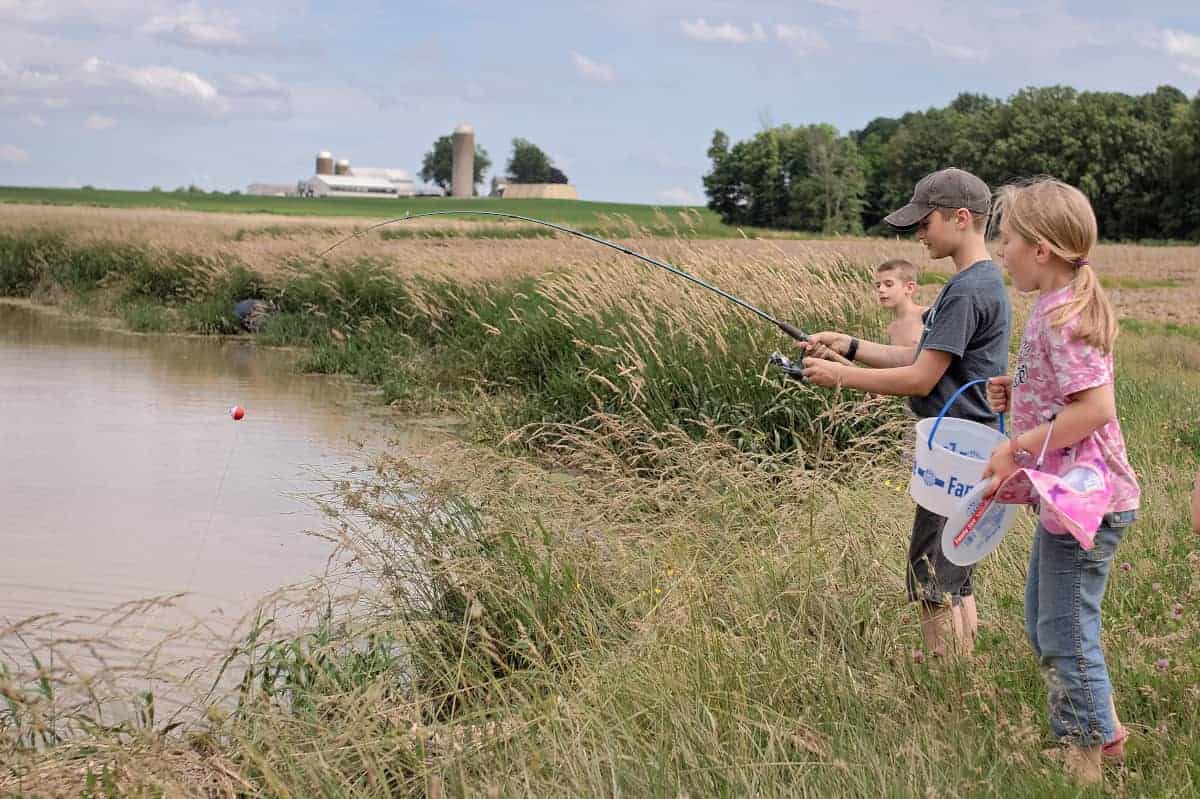
More hands-on activities
When exploring ponds with kids, study the pond water itself. This is particularly fun if you have access to a microscope. The multitude of tiny organisms living in pond water is amazing. Even if you don’t have a microscope, you can get a pail full of pond water and see if you can spot little plants and water creatures in it with a magnifying glass. You may be surprised just how much you can find!
Exploring ponds with kids isn’t limited to the water. A butterfly net can help you capture amazing creatures such as dragonflies, butterflies, and other flying insects, as well as water insects. Chasing a flying insect is a great hand-eye coordination activity—plus, it’s just fun! And when my children do manage to catch a butterfly or damselfly, they love to examine their vibrant colors and fragile wings. Every creature is so unique and beautiful.
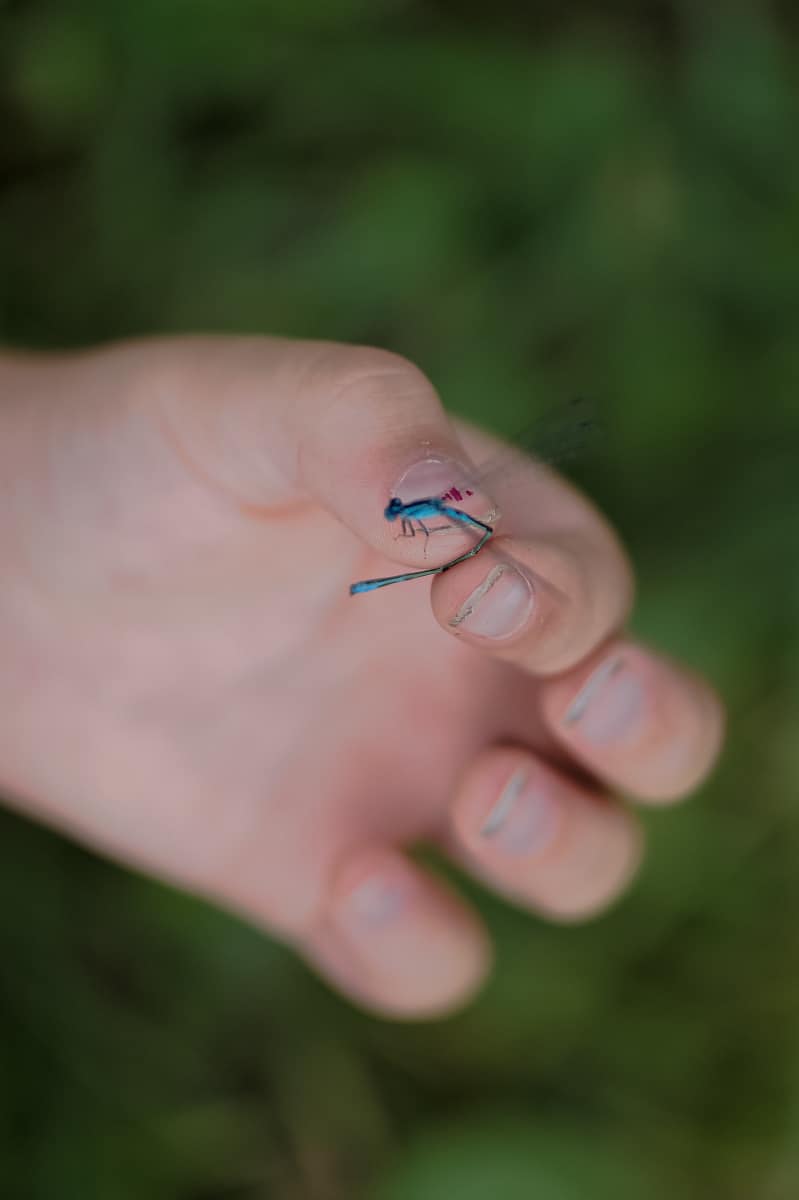
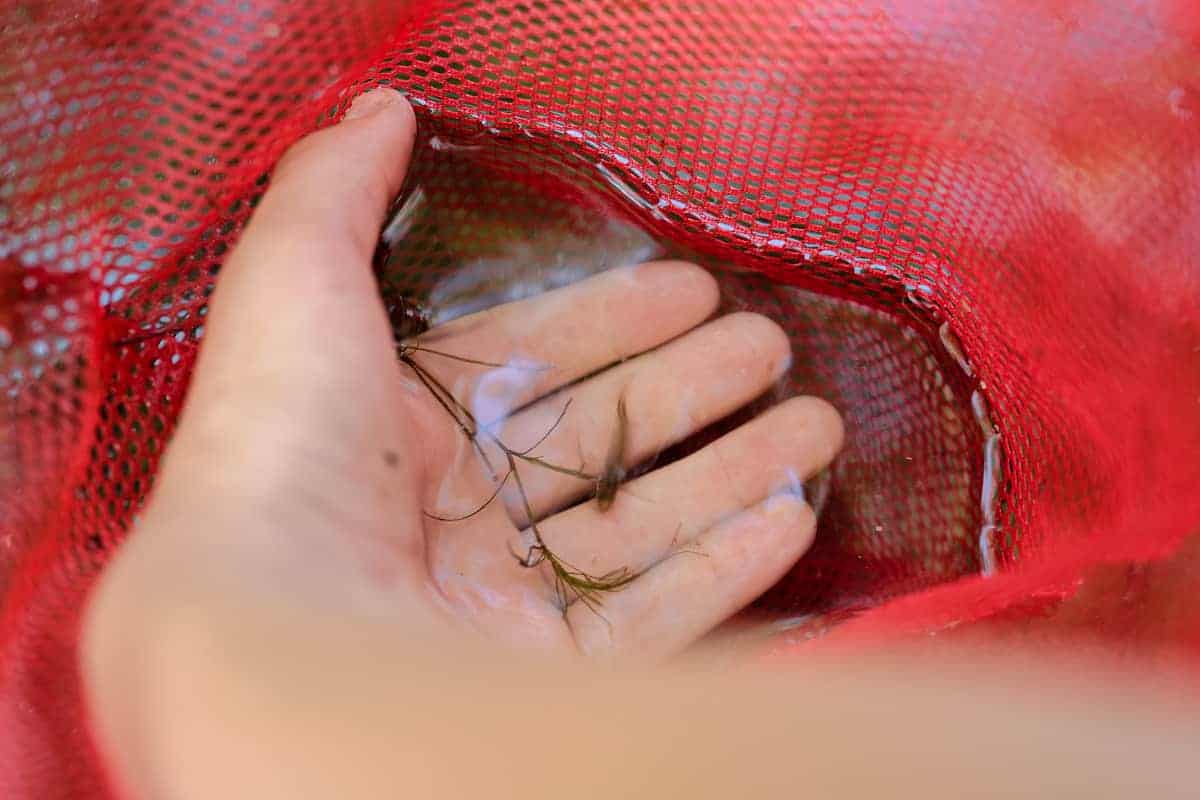
Keeping a pond notebook
If you want to make this a more formal learning experience, bring a notebook or nature journal for each child. Help them keep track of the different living things they see and hear. I love keeping nature notebooks where children can draw pictures of things they have observed and what they have learned about them. Having a pond notebook is a great way for them to process what they are discovering with a quick sketch and a short description. This appeals to some kids more than others, but sitting beside the pond and drawing pictures of what we see is such a lovely way to spend a summer day…or a least a few minutes of one.
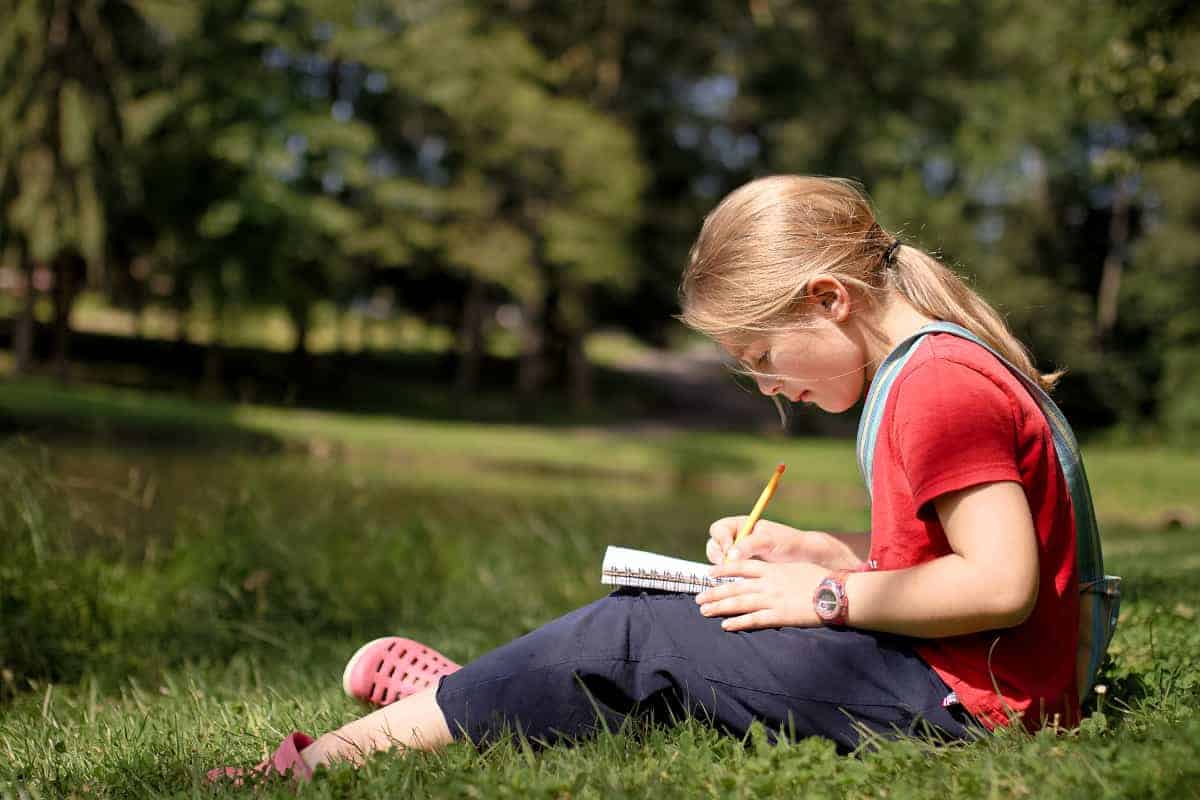
Resources
We have found that nature guides and handbooks are valuable resources for learning about pond life. Teaching kids to look up different plants and wildlife that they see helps them learn on a deeper level. Once they have looked up a bird or a flower in their guide book, they are much less likely to forget its name or characteristics! Plus, we can learn together all the things I don’t know (which are many!). We use some of the classic field guides, like Kauffman Field Guide to Birds of North America.
There are also some great resources available for less than $10, like these illustrated nature guides. The entire Take-Along Guides series is geared toward helping children learn about nature in an easy-to-find, graspable format. I can’t recommend them enough if you are serious about helping your children learn about wildlife and plants for themselves.
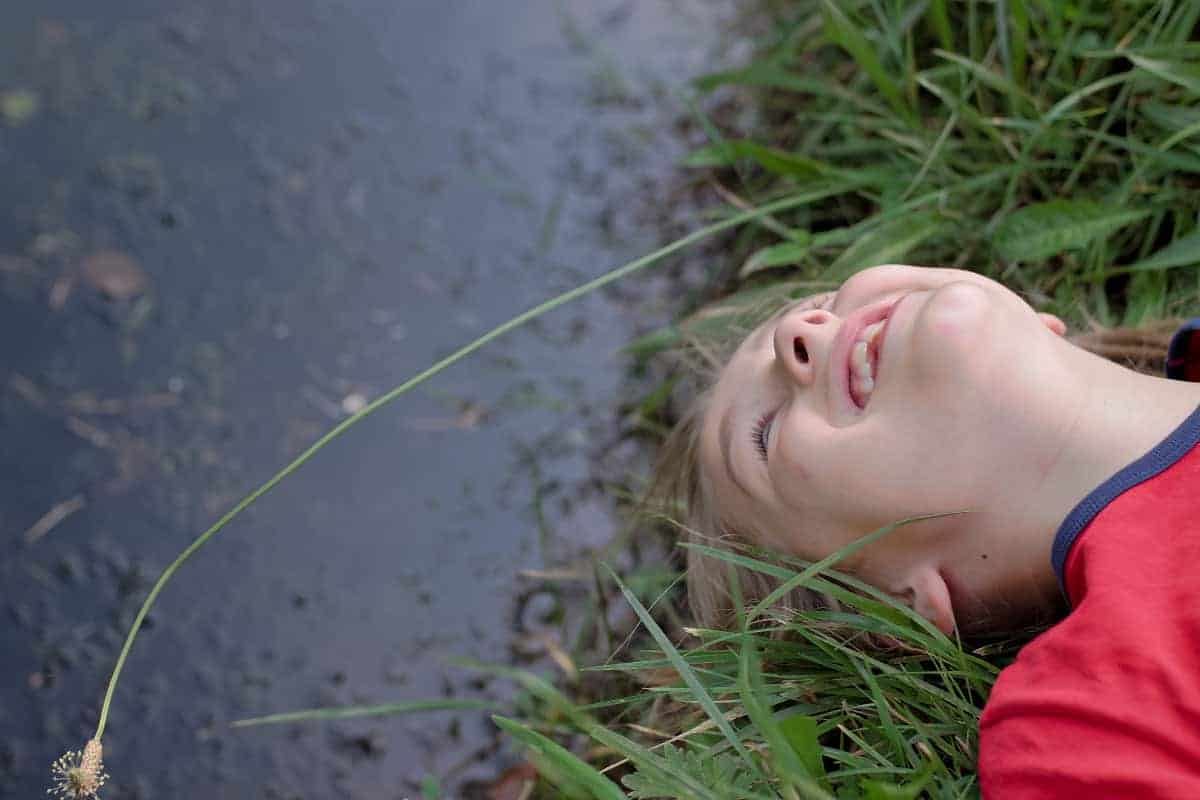
Science & Water Activities for a
Day at the Pond
One thing I really enjoy during the summer are days out with the kids!
We like to explore almost anywhere but since we have a summer budget, finding free places to visit is always a plus since we like to get out a lot during summertime.
You don’t have to travel very far for the kids to feel like they are “on a vacation”.
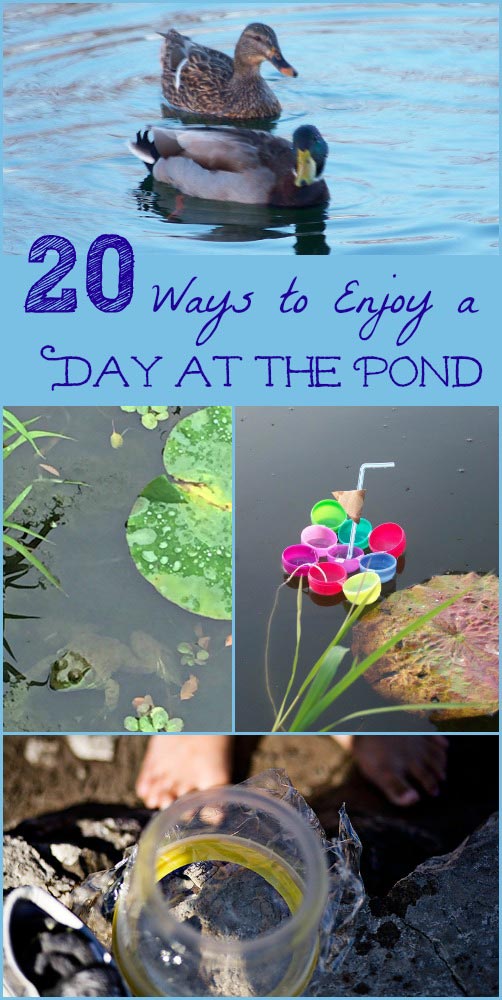
I began to realize the benefits of days out with the kids when I took the kids to a pond one morning – we packed a picnic lunch, grabbed our favorite blanket along with a few other fun things that I had stashed in the car and headed out for a few hours.
It’s amazing how much fun kids have exploring the water!
So today we are sharing all the fun things you can do on a trip to the pond, creek or lake – including a great book list, FREE printable list and some great activities everyone will enjoy.
During our $0 Summer: 105 Free Activities that Make Memories series, I wanted to be sure and highlight some fun & free outings that are perfect for summertime!
At our house, we would call these ‘Friday Field Trips’ because the kids and I loved to get out and explore at the end of the week. I would look for ideas of free places that were within a 1/2 hours drive and off we’d go!
Over the next few weeks, we’ll share our secrets about how to find free attractions and places to visit.
Today, we’re off to the pond!
A day exploring the water and all it’s treasures will delight almost any child — both young and old!
I’m sure you have fond memories of wading through a creek, catching tadpoles from a pond or getting wet when your Mom asked you to stay dry 😉
In addition to adventuring, a visit to the pond also introduces kids to science — a whole new habitat with a large variety of plant and animal life.
First, a packing list for this fun adventure!
I would tuck the following items into the car before you head out:
° A Picnic Blanket(preferably one that’s waterproof on the bottom)
° An extra towel
° Picnic lunch or a snack along with water bottles
° Swim shoes(the kind with closed toes that you can get wet)
° Bring sneakers and flip flops (so you’re ready for both wet and muddy areas)
° First aid kit
° Sunscreen
° A few great books about the pond (see our booklist below)
° Bucket or pail
° Some lettuce, peas, spinach or other types of veggies (to fee the ducks)
° Fishing pole (if you have one – see free fishing below)
° A WaterScope(or see the details below for making your own)
° A Sketch Padand pencils if you’d like to draw
° A nature journal (see how to make your own DIY nature notebook)
° Small animal figures like this Frogs and Turtlesanimal set
Habitat and Science Activities for the Pond
Try not to over-schedule your time during the visit — let the kids have a chance to explore on their own and see what peaks their interest.
Here’s a few things we’ve enjoyed:
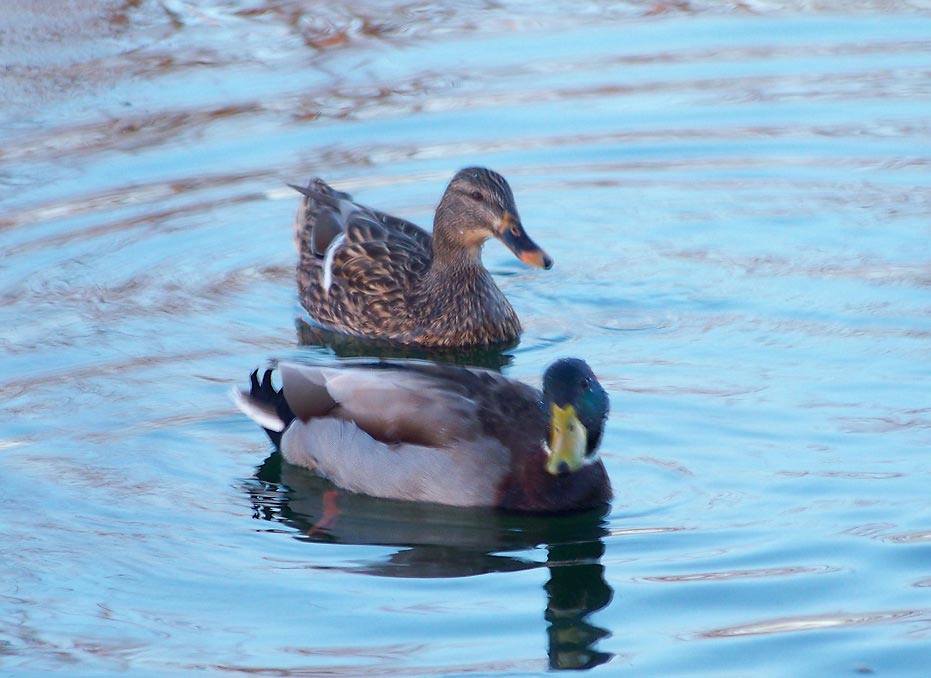
Feed the Ducks
Take along some greens and feed the ducks, geese and other water fowl. Patty, one of our readers who is also a volunteer with the Audubon Center let me know that the best items for feeding ducks include “peas, lettuce, spinach, even the green veggies that are wilting at the bottom of your fridge drawer. But no carbs, please. These are veggie eaters and shouldn’t be fed bread, ever.”
Gather Cattails
Something about this fuzzy plant is mesmerizing for kids.
Take a Hike
You can estimate a measure of the pond by walking the perimeter (great math lesson for older kids!) and see the plant life around the edges.
Feed the Fish
Sometimes more fun than feeding the ducks! Use the same items you would for feeding ducks (wilted lettuce, cooked peas, or spinach and watch them jump to the surface to grab a snack.
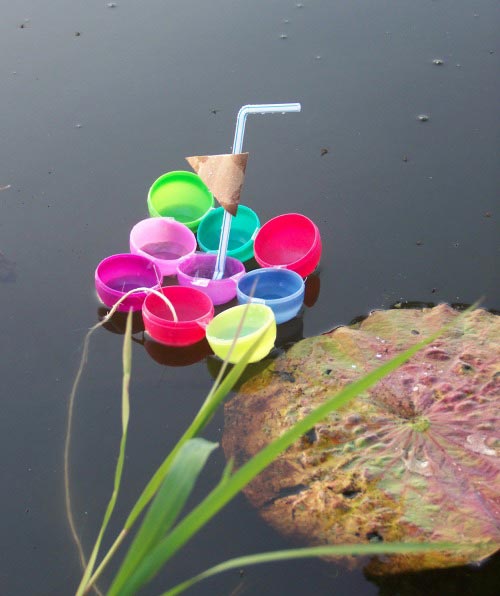
Float a Boat
Make some homemade boats and have a race!
Act out your Visit
This is a wonderful language activity for young kids! Bring along any small animal figures you might have at home and have them talk about what they saw during their visit.
Do Some Math
Count the number of frogs or fish you see or the number of lily pads. Older kids will enjoy estimating the number of fish or even the number of steps it would take to walk around the pond.
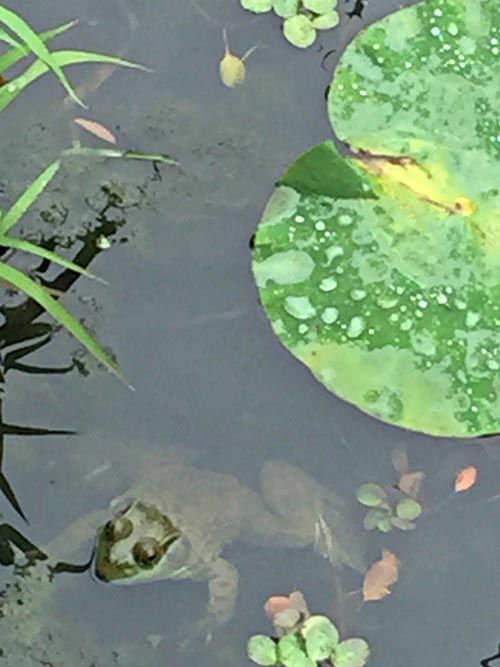
Look for Frogs
Or maybe I should say listen for frogs 😉 You will hear them croak during twilight so an evening visit will have a special ‘chorus’ included. You can also look for them along the rocky, shaded edges of the water during the day.
Get a Close-up Look at Things
Catch tadpoles or crawfish in your bucket so the kids can become acquainted with them up close! Be sure to return them to their home before you leave.
Go on a Treasure Hunt
Print out this Pond Scavenger Hunt from Natural Beach Living and see how many items you can find on your visit!
Go Fishing!
Free fishing days are offered in many states during the summer months. You can learn more about which days allow fishing without a permit or license in your area at Take Me Fishing.
Spy on the Fish
Make a water scope (All For the Boys shows us it’s super easy!) before your visit and you’ll get an awesome underwater view of the animals!
Channel your Inner Artist
Bring along sketch pad and pencils or a nature journal for some drawing or writing during your visit. You can learn how to create your own DIY Nature Notebook too!
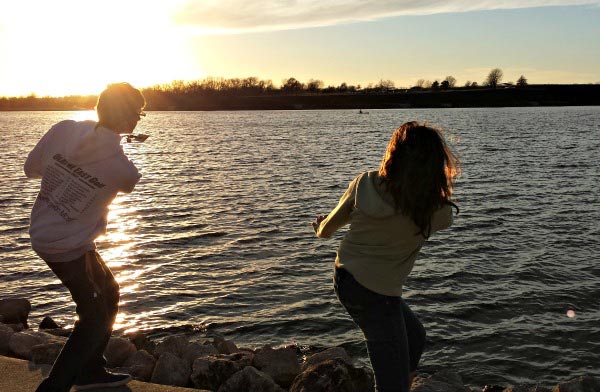
Skip Rocks
A favorite childhood activity — this takes some practice but I’m sure Mom or Dad will be happy to pass along the skill 😉 Plus it’s a great way to burn off some energy too.
Take along your Camera
Snap pictures of all the animals & plants that live in and near the pond to get an idea of the large variety of life in this habitat.
Wade in!
Get your feet wet (here’s where the extra towel comes in handy) for a fun & squishy sensory experience!
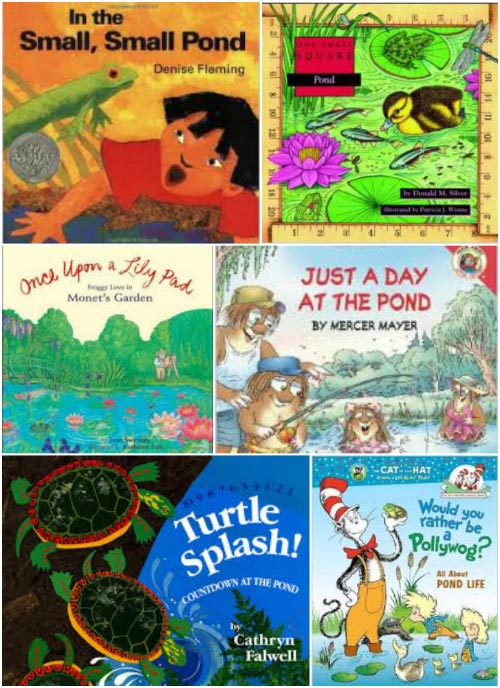
Kids Books about Pond Life
Lay out a blanket and enjoy a few of these stories! We’re including affiliate links for each book so you can learn more about the stories on the list.
In the Small, Small Pond— a wonderful look at the fun you can have exploring a pond!
Turtle Splash!: Countdown at the Pond— turtle math that young kids will enjoy!
Pond— this is a gorgeous book that shows the reader all the details about life in a pond habitat.
Little Critter: Just a Day at the Pond— we love Little Critter! Read along as his family visits a pond for the day.
Would You Rather Be a Pollywog: All About Pond Life — from the Dr. Seuss Learning Library, kids will enjoy learning lots of facts about the plants & animals that live in and near a pond.
Once Upon a Lily Pad: Froggy Love in Monet’s Garden— such a sweet story (that reads like a fairy tale) about two frogs who get married and the man who visits their pond home.
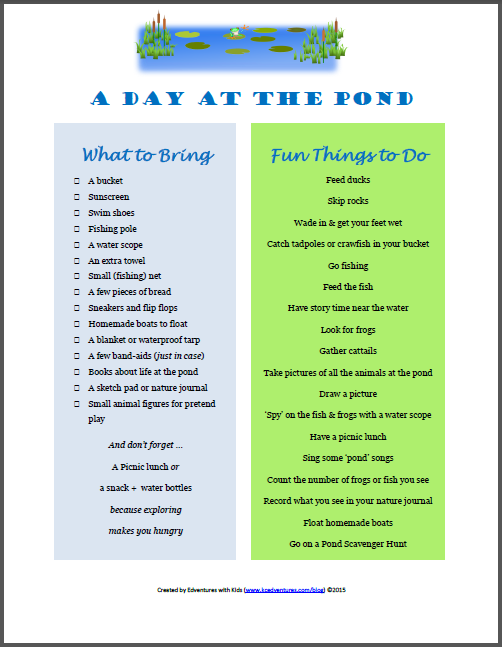
Print off this free ‘Day at the Pond’ list and spend a day kicking back with the frogs & fish 😉 Looking for more ideas & activities for summertime fun? Be sure to visit this $0 Summer: 105 Free Activities that Make Memories series kick-off post!
Collecting Natural Treasures
From the Banks of a Pond
From the Banks of a Pond
Tips For Collecting Natural Treasure From the Banks of a Pond For Crafts
Collecting natural objects when you’re out and about enjoying the fresh air is a great way to find craft materials.
You’ll find all kinds of inspiring and beautiful items regardless of where you are. And this post is designed to give you a bit of guidance about the rules and etiquette involved.
Suggestions for natural items to collect
First things first: here’s a list of the things you could collect for use in your craft projects:
Shells
Pebbles
Driftwood
Feathers
Leaves
Flowers
Pine cones
Sycamore seeds (I used to call them “helicopters” when I was little!)
Acorns
Sticks
River rocks/pebbles
Sea glass (technically rubbish but often beautiful, so you can collect as much of this as you like!)
Seaweed
Seashells
For more inspiration- Find a project you want to try and then think about where you might find the natural materials!
Collecting natural objects from living plants, trees and flowers
On the whole, it’s easiest to collect leaves and sticks etc that have fallen naturally. But it’s okay to cut flowers and leaves from living plants too, as long as you abide by a few rules.
According to Plantlife, it’s ok to pick wildflowers, leaves and berries “for personal, non-commercial use.” There are a few exceptions, however, such as highly threatened plants and any plants on sites designated for conservation interest.
You also mustn’t uproot a whole plant to replant elsewhere (like your garden) – but as you’ll be collecting items for use in crafts, you’ll just be snipping off the bits you want.
Be selective, don’t be wasteful, and don’t take too much from one plant. If there are a number of the same plants in an area, take a little from each plant rather than just from one. This is especially important with small plants.
Leave the surrounding area as undisturbed as possible. And especially in the spring, be mindful of birds or other animals that may be nesting nearby.
But if you’re walking in your local park, beware. Don’t pick anything cultivated as it can be considered criminal damage or theft, as innocent and harmless as it may seem.
For a bit more information on the rules surrounding flower-picking, take a look at this Guardian article.
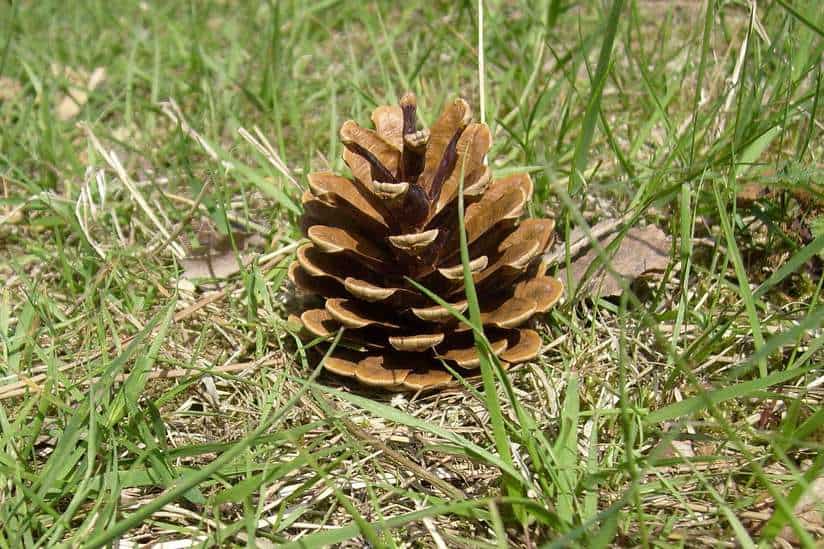
The dos and don’ts of collecting from nature
DO keep your eyes peeled when out and about. A walk on the beach or through a forest can yield some fantastic stuff.
DO get out and about often! I have nothing more to say on this, because why would you need convincing?
DO work with Mother Nature! The weather can make a huge difference in what’s available to collect. The morning after a storm can be great for collecting stuff that has been washed up on a beach, and similarly a windy day can be great for collecting leaves or pine cones that have just fallen.
DO consider the seasons. If you’re looking for flowers and deciduous leaves, winter isn’t the time to do it. Also consider the seasons of the particular things you’re looking for. For example, spring is the season for tulips and daffodils whereas peonies are lovely during the summer and marigolds in the autumn. Winter is a great time to wrap up warm and get beachcombing!
DON’T pull bark from a living tree; instead, collect it from a fallen log. Since these can be few and far between, it pays to keep your eyes open whenever you are out and about if you fancy trying a craft project incorporating bark.
DON’T over collect. Remember that certain items are vital for keeping the beach habitat balanced, such as washed up shells and driftwood. Taking a few bits and pieces is one thing, but leaving the beach with bucketfuls is not on. You also shouldn’t take rocks from the beach, as they are important for combating coastal erosion.
DON’T pick anything endangered or protected. If in doubt, leave it where it is.
DON’T venture onto private property for the sake of a pretty pebble or leaf. Anything on private property belongs to the landowner…and yes, that means even the thistles and dandelions!
So as you can see, there are many natural objects that could be useful in crafts and it’s a lot of fun collecting them providing you do so safely and responsibly.
Above all, if something appeals to you or intrigues you, pick it up and find a use for it later! (I’m soooo guilty of this… )

You can unsubscribe at any time
Kid’s Nature Collection
It won’t be long until my oldest is an official kindergartener! And how do I feel about this? Nervous…excited…happy…and sad! It’s fun to watch him grow up, but he was my first baby and now he is losing teeth! I worry about if he will make friends, if he will be bullied, and if he knows everything a soon-to-be kindergartener should. My fears were calmed when Deborah Stewart of Teach Preschool invited me to be a contributor to her blog book study for her new book, Ready for Kindergarten! I devoured the book and am now confident that he is ready!
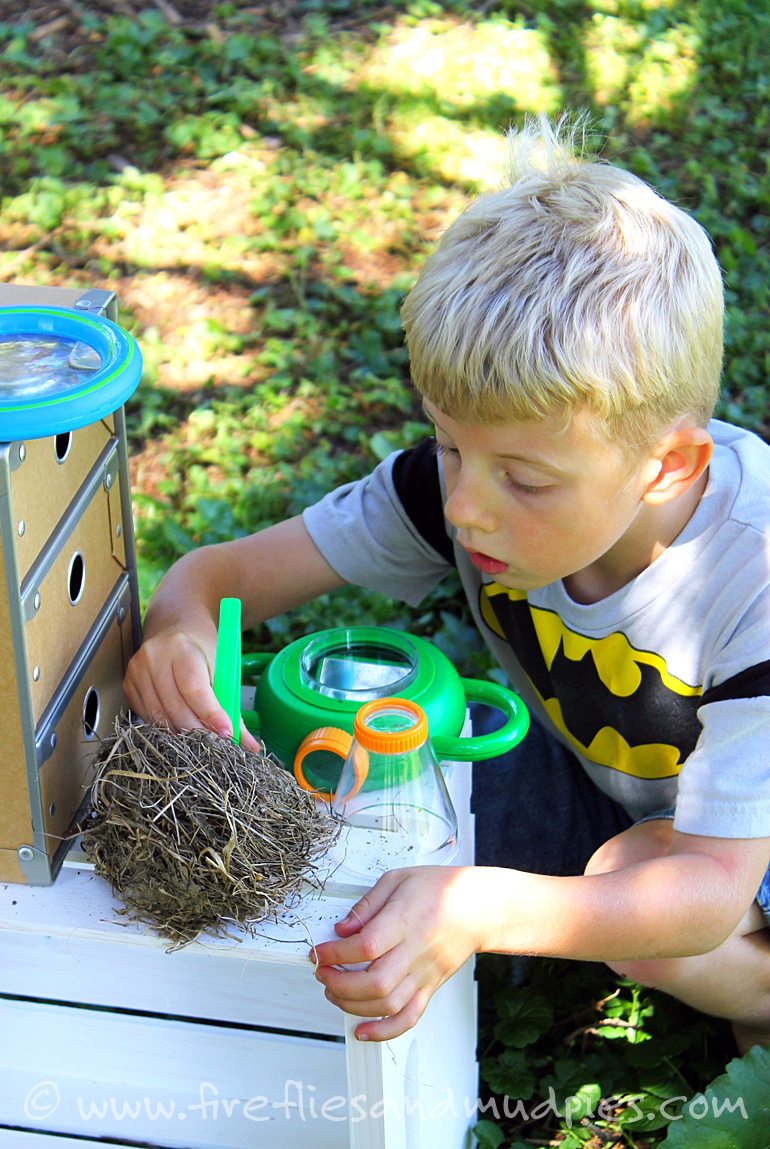
I received a complimentary copy of Ready for Kindergarten in exchange for participating in the blog book study.
Ready for Kindergarten is easy and enjoyable to read. The play-based, hands-on activities were created to give parents at-home tools to prepare their child for kindergarten. For my portion of the blog book study, I will be discussing Chapter 9: The Great Outdoors.
In her book, Deborah shares:
As young children spend time outdoors, they are better able to develop their awareness of the natural environment and the role they play in taking care of the environment.
This statement is absolutely true! Children who explore nature are curious about the natural world and are well on their way to becoming environmental stewards. One way that I encourage my boys to interact with nature is through their Nature Collection.
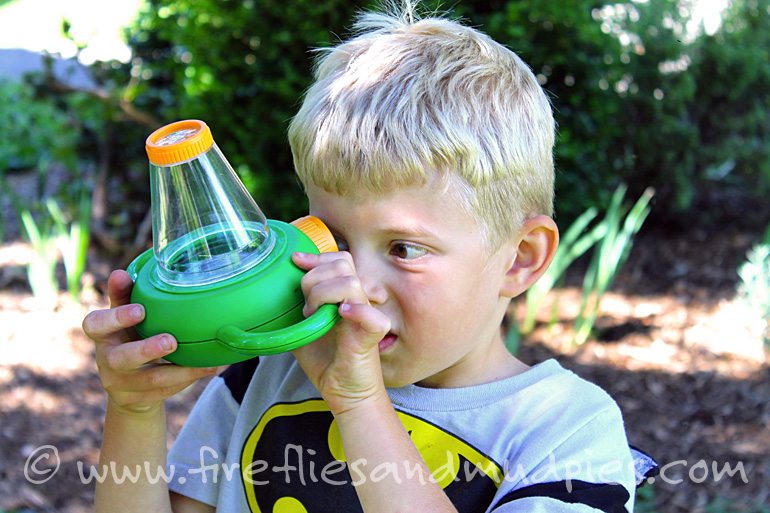
Kid’s Nature Collection
Raise your hand if your child incessantly picks up rocks, sticks, and leaves they want to keep. (My hand is up!) I used to have my boys place their nature treasures in a basket, but recently, we’ve begun storing their bits of shells, leaves, flowers, and bark in a 3-drawer cardboard box that I purchased in the scrapbook aisle of Michael’s.

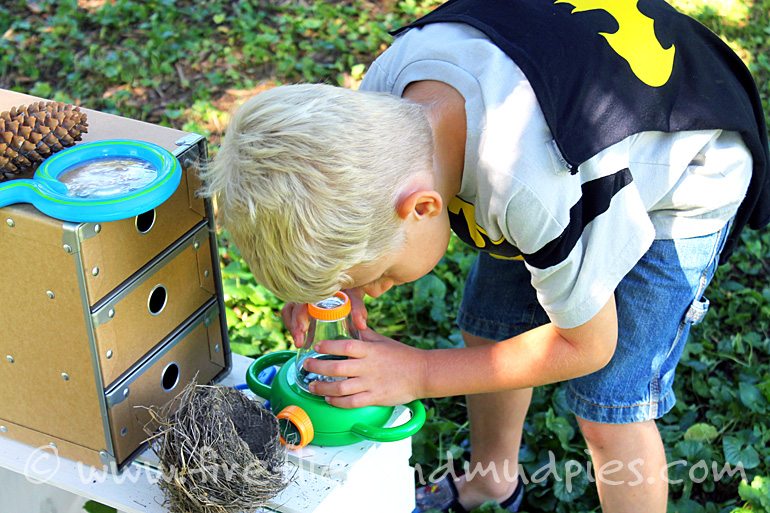
My oldest son has the top drawer, my little guy manages the middle drawer, and the bottom drawer houses magnifying glasses, plastic tweezers, and pocket nature guides. I store the Nature Box on a crate in the garage. The boys frequently pull it out to investigate its contents.
In her book, Deborah mentions that a soon-to-be kindergartener should demonstrate a basic knowledge of the names of natural objects and animals. She encourages her readers to ask open-ended questions to kids like, “How do you think the bird made that nest?” so that they can evaluate their child’s understanding and teach them to stretch their thinking. A nature collection gives endless opportunities for these discussions, but also is a special way to remember time spent together. When my boys pull out their shells, they usually says something like, “Oh! Remember when we collected these from the beach in Maine?”
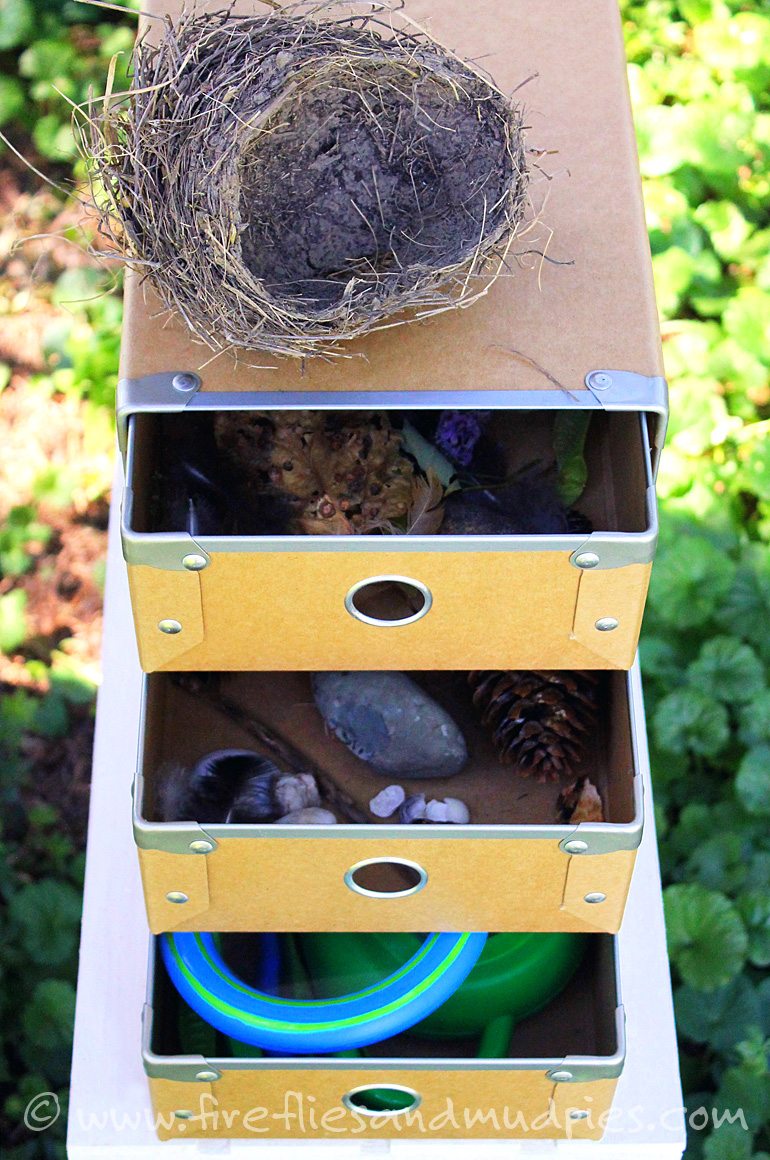
A WILDFLOWER HUNT ACTIVITY
This Wildflower Hunt Activity is a simple and easy activity requiring only 2 materials and lot’s of gross motor fun!
If you’re looking for a way to incorporate gross motor skills into your childs’ life, summer is the best time to do it. And with this Wildflower Hunt kids are moving in search of the pretty flowers. They’ve motivated to fill their egg carton with pretty little discoveries!
We did this activity the other day with our kids and they were thrilled! It was really fun even for me, actually. Searching, finding and filling our collection felt great and kids felt proud. After our egg carton was full we talked about the different wildflowers we found. Each one being so beautiful and unique.
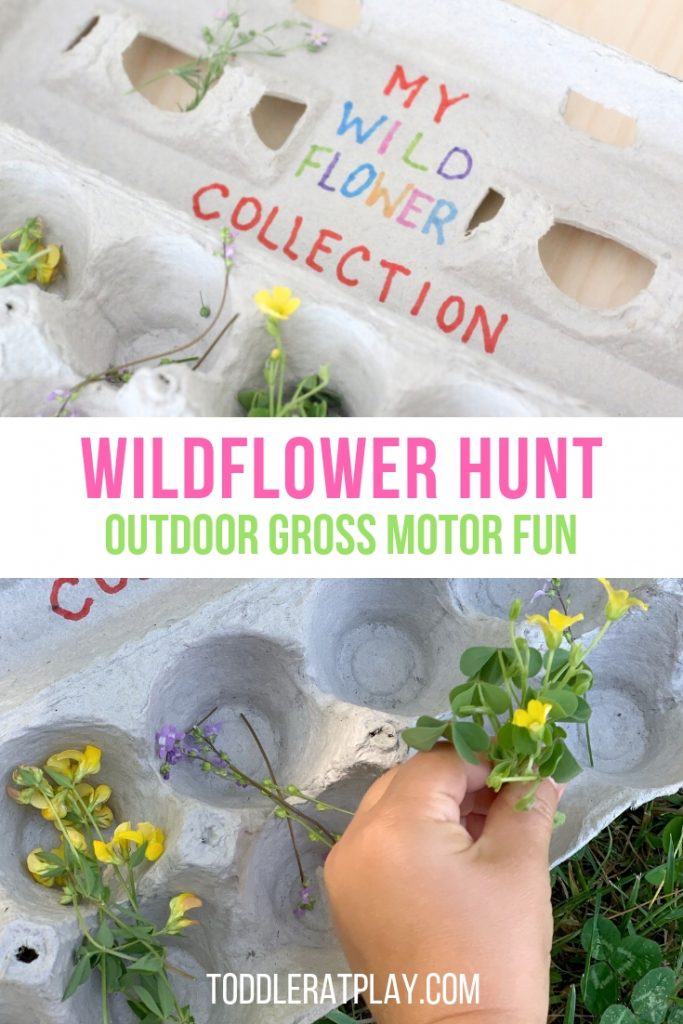
I’m certain your kids will enjoy this simple activity that will make learning a ton of fun! Keep reading to see what kids are improving beyond gross motor skills!
RELATED: Rock Collection
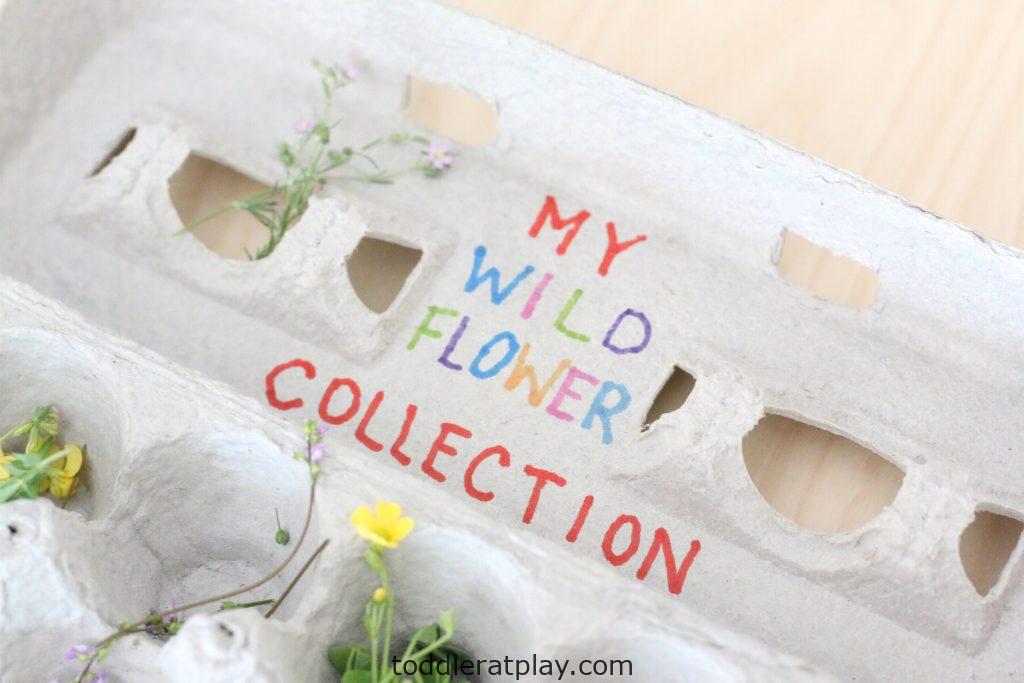
All activities should be supervised by an adult.
MATERIALS:
INSTRUCTIONS:
Using the scissors cut off the flap on the egg carton for the closing. Next, using the colored permanent markers, write “My Wildflower Collection” right on the lid part of the egg carton. Prep is done, now it’s time for the hunt!

WHAT IS MY CHILD LEARNING AND IMPROVING?
Gross motor skills (this is a wonderful activity for the kids to get moving. Searching for wildflowers takes walking, running, bending and who knows, maybe even jumping!)
Fine motor skills (kids are using their thumbs and pointer fingers to pinch or pick the flowers)
Cognitive skills (analyzing the flowers, shrubs and grass to find the wildflowers. They’re thinking, matching, comparing)
TIP- as you are searching for wildflowers it’s a wonderful time to talk with your kids about the beautiful nature surrounding us. We talked about how meticulous God is and what beauty He created for us to enjoy! To tie in wildflowers, we talked about how even they are taken care of by Him. We looked at the colors, shapes and number of petals. Do they all have long stems or some have short, do they have many leaves or not and how are they similar. It’s an awesome learning activity!
MAKE THIS WILDFLOWER EGG CARTON HUNT TODAY!
RELATED
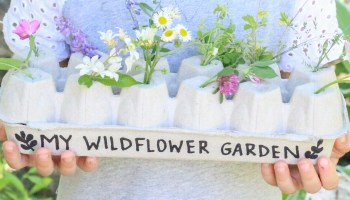
Egg Carton Wildflower Garden
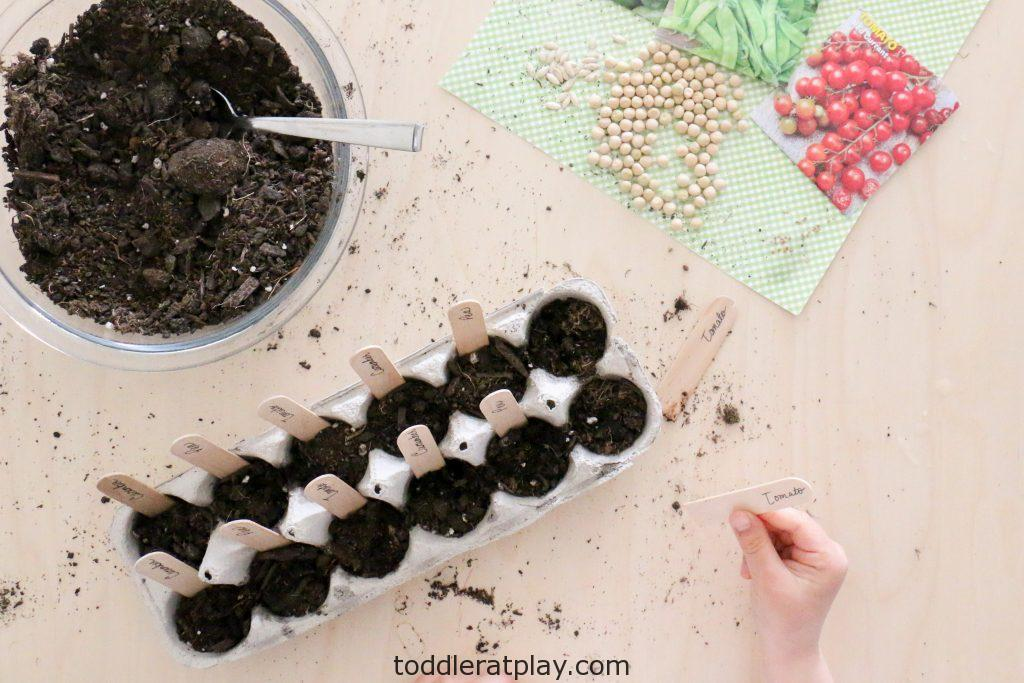
10+ Egg Carton Ideas for Kids
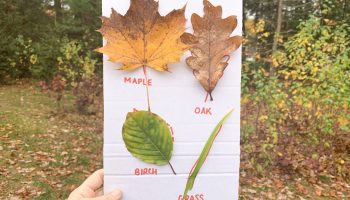
Leaf Scavenger Hunt Activity
MY ROCK COLLECTION
(OUTDOOR ACTIVITY)
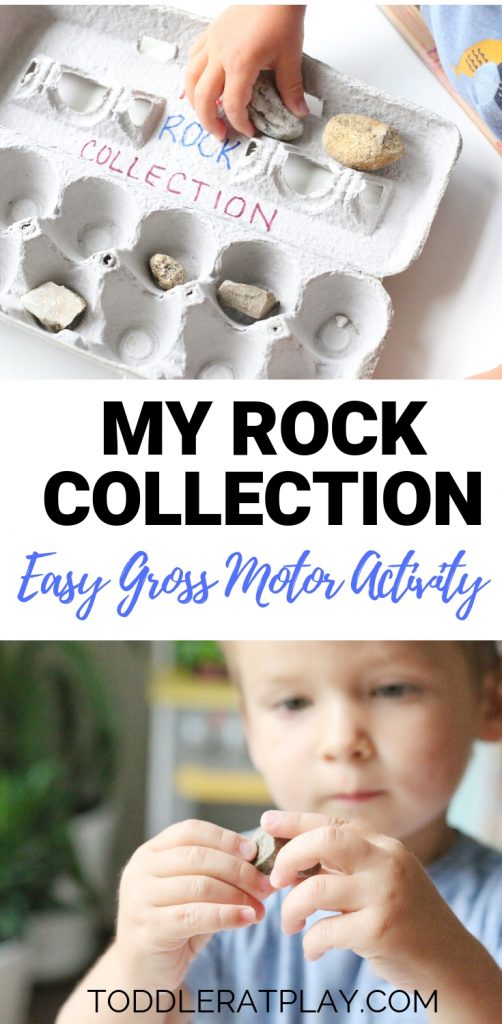
Enjoy the outdoors with this My Rock Collection Activity! It’s a super quick and easy, low prep kids activity that works on both gross and fine motor skills.
You’ll only need an egg carton and markers to make this fun activity happen! I prepped this in under a minute and told my kids we’re going on a rock hunt outside. They absolutely love hunting activities (that’s why we do them so often) and they were totally thrilled looking around the whole neighborhood for different rocks. We found many different ones, many varied in color and size and the whole hunting experience was an eye opener, in a sense. They had so much fun learning about them. Afterwards, we brought them inside to “inspect”. I brought in a flashlight and a small magnifying glass to take a closer look and the kiddos felt so special observing the rocks like they’re some sort of scientists!
Take a closer look at the areas of development kids are learning and improving below!
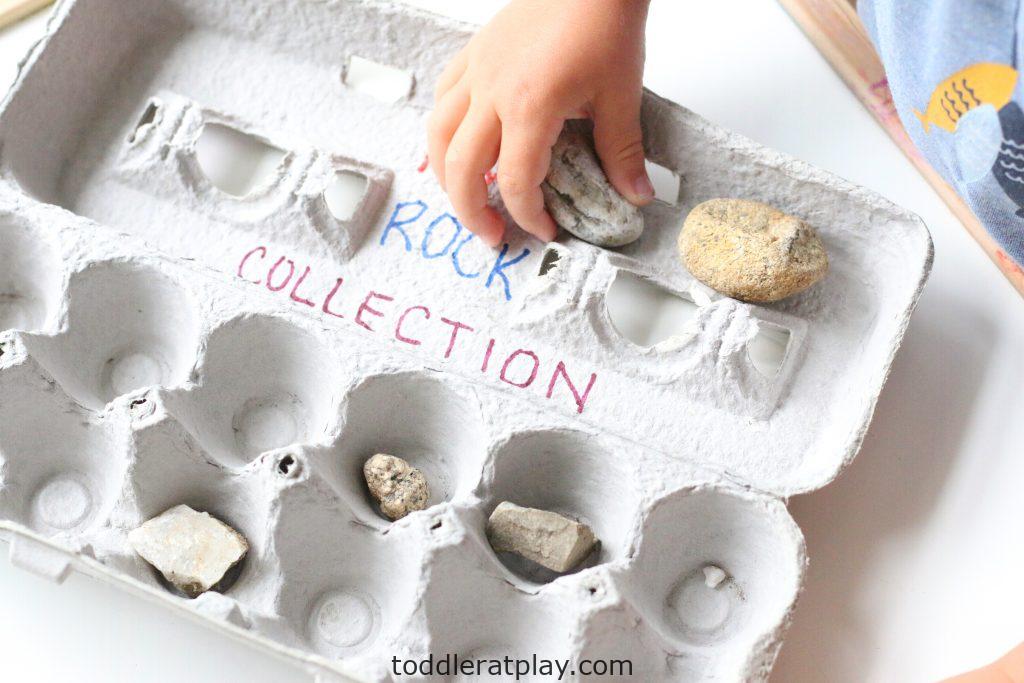
MORE OUTDOOR ACTIVITIES YOUR KIDS WILL LOVE:
All activities should be supervised by an adult.
MATERIALS FOR MY ROCK COLLECTION ACTIVITY:
Egg carton
INSTRUCTIONS:
Inside, at the top of the egg carton write “My Rock Collection”. I used different colors of permanent markers to make it more fun!
Now head outdoors with your little ones on a fun, outdoor hunt for rocks!
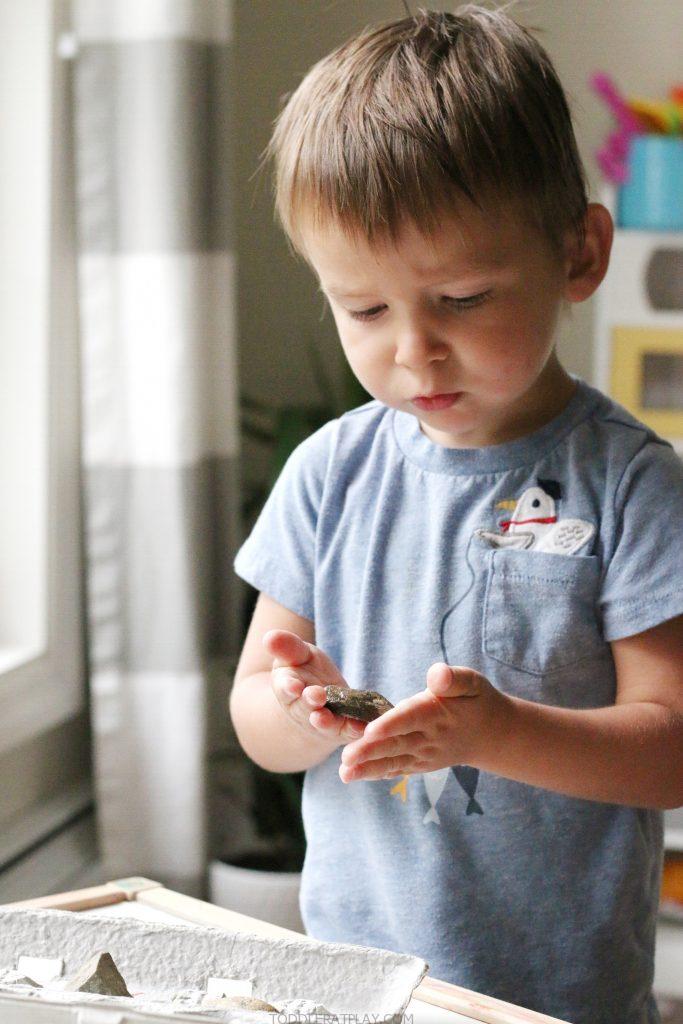
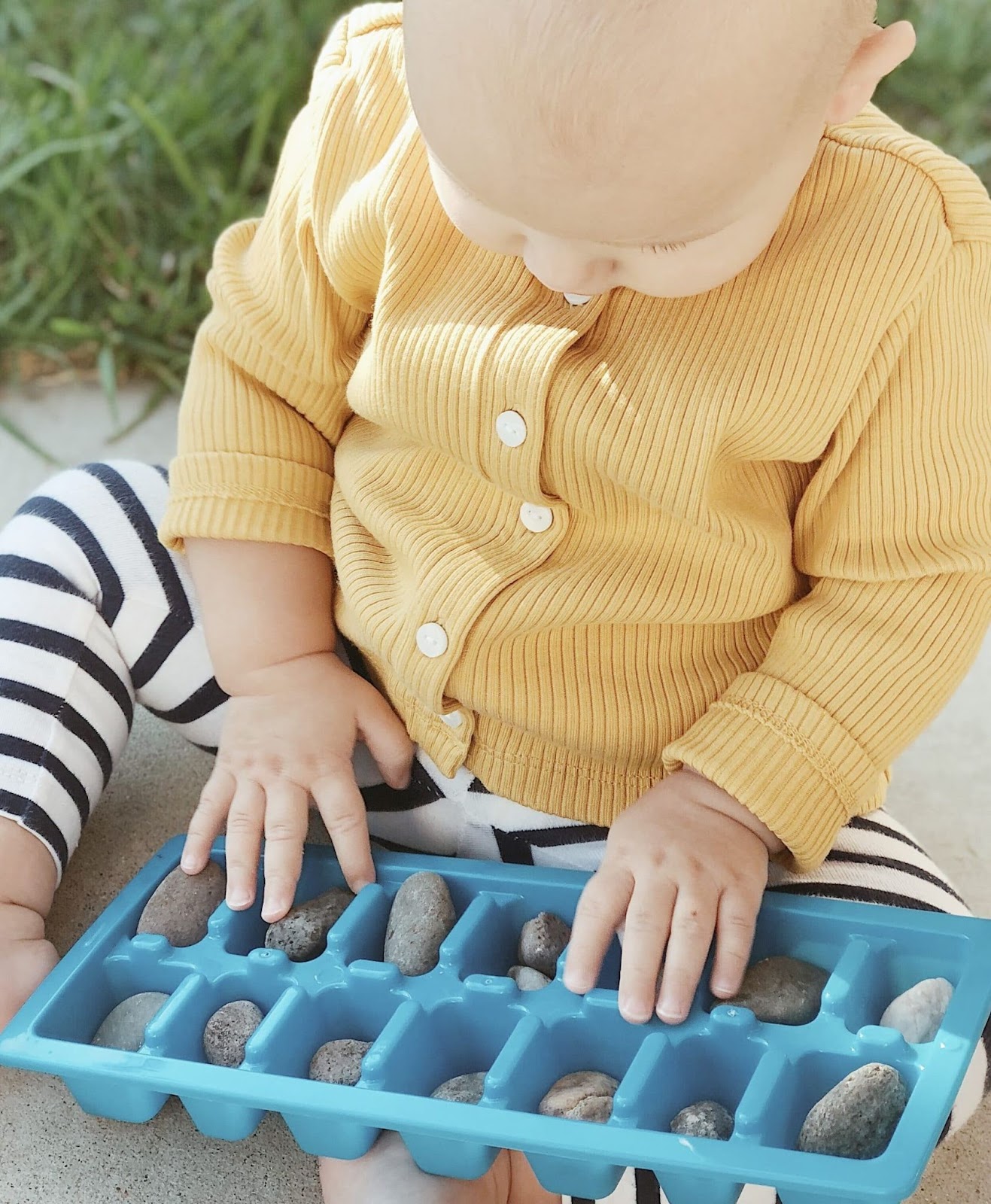
WHAT IS MY CHILD LEARNING AND IMPROVING?
Gross motor skills (children are running around, walking, bending over to pick up the rocks, exercising and strengthening their lower part of the body such as thighs, legs, ankles, feet)
Fine motor skills (using their fingers to pick up the small, or large rocks)
Creativity
Cognitive skills (kids are thinking, matching, comparing, analyzing each rock/object)
TIP- when doing this activity with your children, discuss each rock, its color, shape, size, weight.
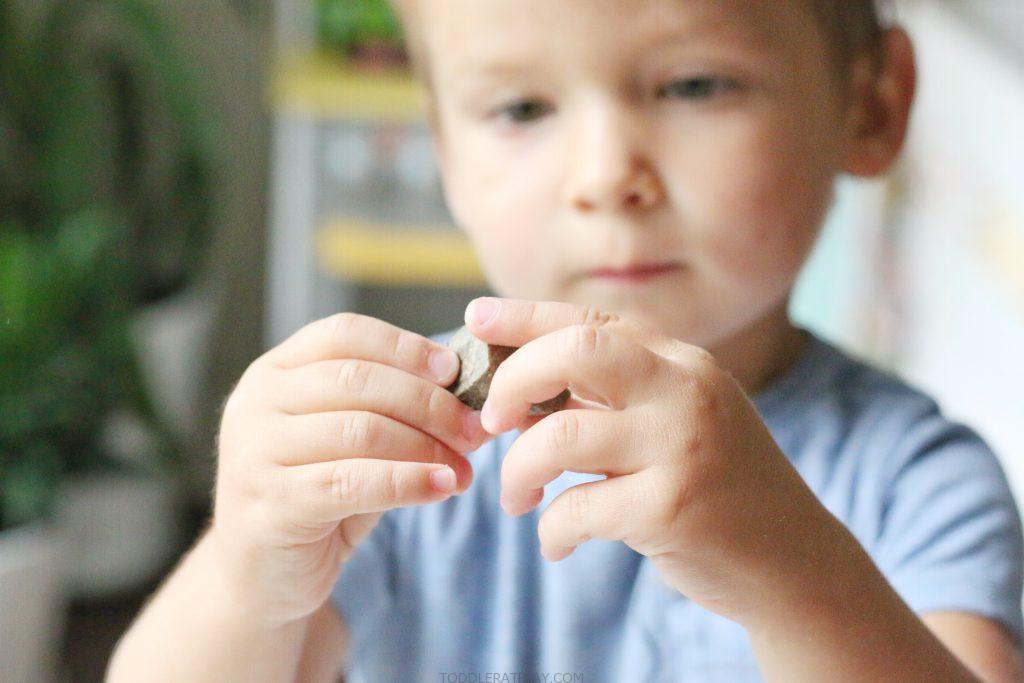
HOW FUN AND SIMPLE IS THIS “MY ROCK COLLECTION” ACTIVITY?
RELATED
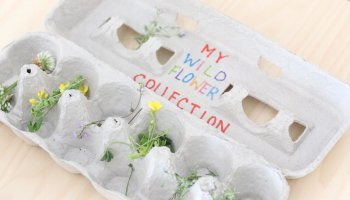
Wildflower Hunt Activity

10+ Egg Carton Ideas for Kids

Egg Carton Wildflower Garden

Nature Scavenger Hunt for Littles
If there's one thing about toddlers and young kids—they sure are busy little people! That's...
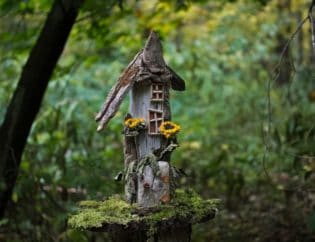
Fashion a Fairy House
“If I had influence with the good fairy who is supposed to preside over the...
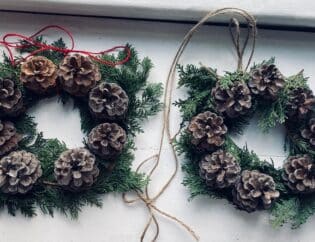
Make a Pinecone Wreath
This fun and easy project is also an excellent way to spend some time outdoors...
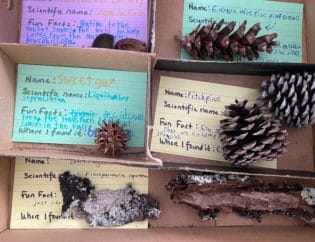
Build a Homemade Natural History Museum
The physical and mental benefits of taking a walk or hike in nature are reasons...
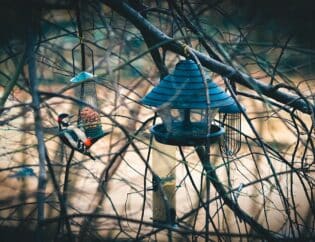
The Dos and Don’t of Feeding Birds
Nature offers us the most precious and vital gifts each and every day. But one...
DIY Easy Critter Catching Kit and Free Printable
DIY Cutest Critter Catching Kit and Free Printable
Get your kids outside with this fun (and inexpensive) Bug Catcher Kit!
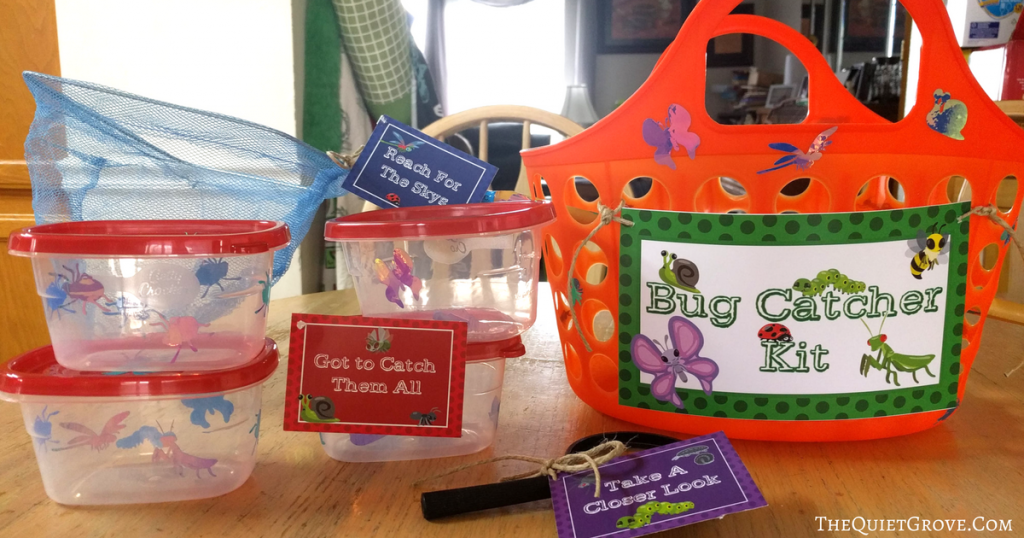
When I think about Spring I think about Spring Holidays, New Life, Rainstorms, Flowers and Bugs.
With the weather finally warming up I have been looking for ideas for outside fun for my kids. Playing outside is so important for the health and developement of our kids. While playing outside with my kids the other day my daughter noticed some bees happily jumping from flower to flowers. Soon all my kids were crouched down in front of the flowers holding very still as they watched those busy bees. Soon the bees moved on and my kids moved on to looking for and watching other bugs.
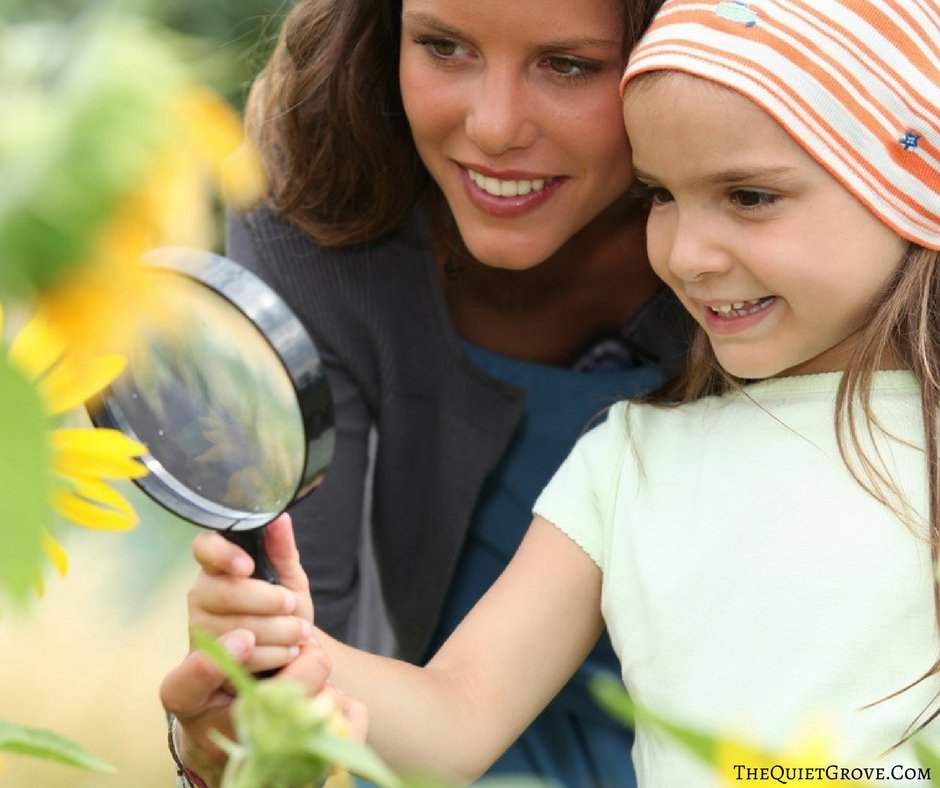
My children (aged 3-8) however are entirely too interested in the creepy crawly flying creatures. Seeing how fascinated they were with the bugs around I thought it would be fun to make them their own bug catching kits so tey could find, catch and observe.
Materials Needed:
Bucket (I got a plastic one with lots of holes in it.)
Butter Fly Net
4 pk Thin Plastic Food Containers
Magnifying Glass
String/Ribbon
Cricut Explore Air 2 (or other Cricut Cutting Machines that work with Design Space)
SVG Files for Bug Silhouettes
Standard Grip Mat
Fine Point Blade
Essential Tool Kit
Holographic Vinyl
Piercer from Paper Crafting tool Kit
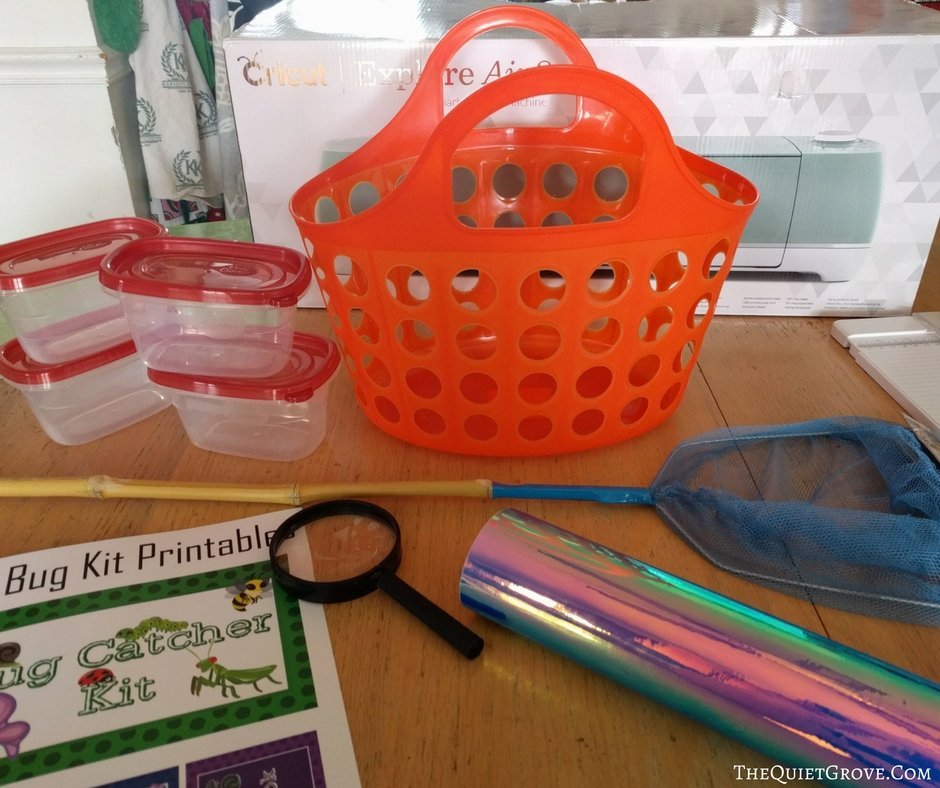
Instructions:
Using The Piercer (from the Cricut Paper Crafting Set) poke holes in the top of the tupperware lids so that the bugs can breathe. (I got a 4 pk of those thin plastic food containers from my local dollar store.)
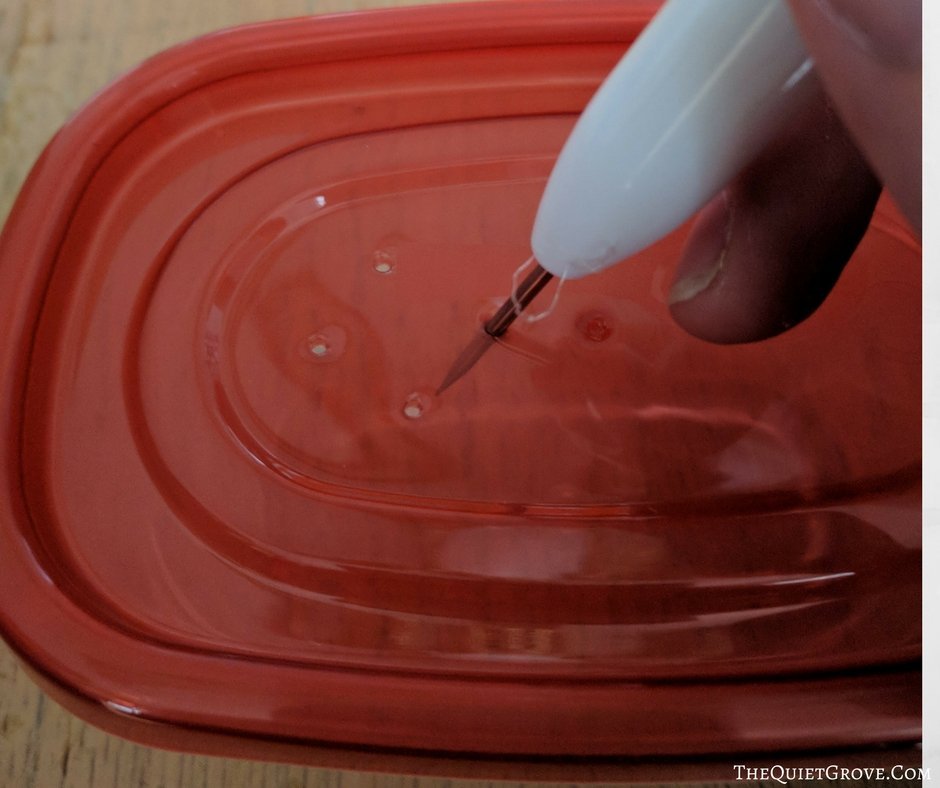
Download the Bug SVG Cut files (found here) to cut out with your Cricut. (I made sure to size them small to best fit on the bug containers (Butterfly catcher, and basket.) For the stickers I used Cricut’s Holographic Vinyl (to cut make sure your machine is set to custom and then holographic vinyl.
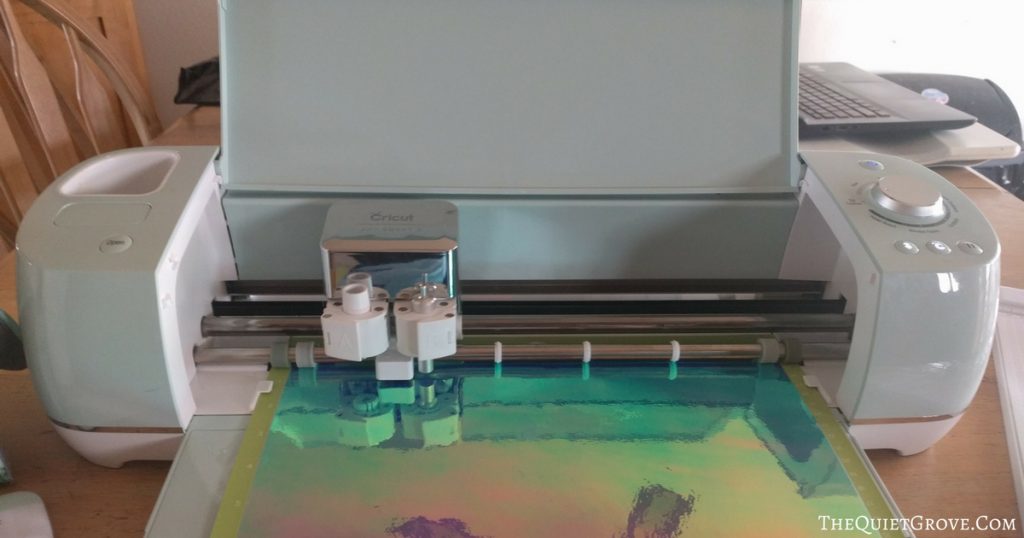
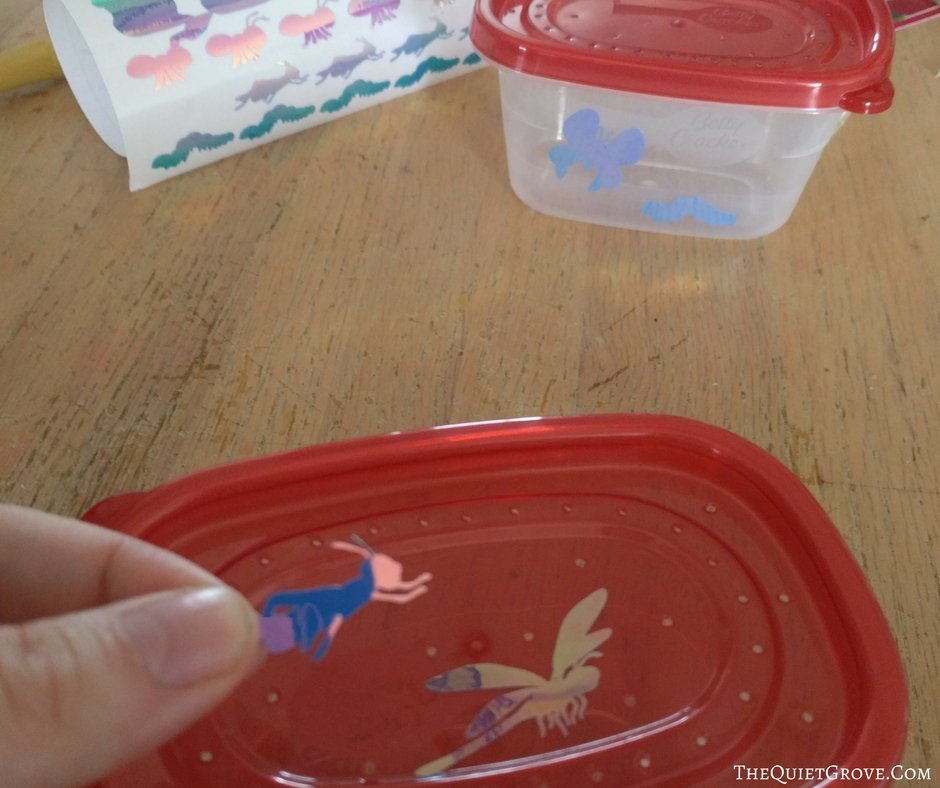
Weed the excess vinyl leaving only the stickers, then place on your butterfly catcher, Basket and bug containers (avoiding covering the holes in the lids)
Print out the Bug Catching Kit Labels (Get Printable for free Here.)
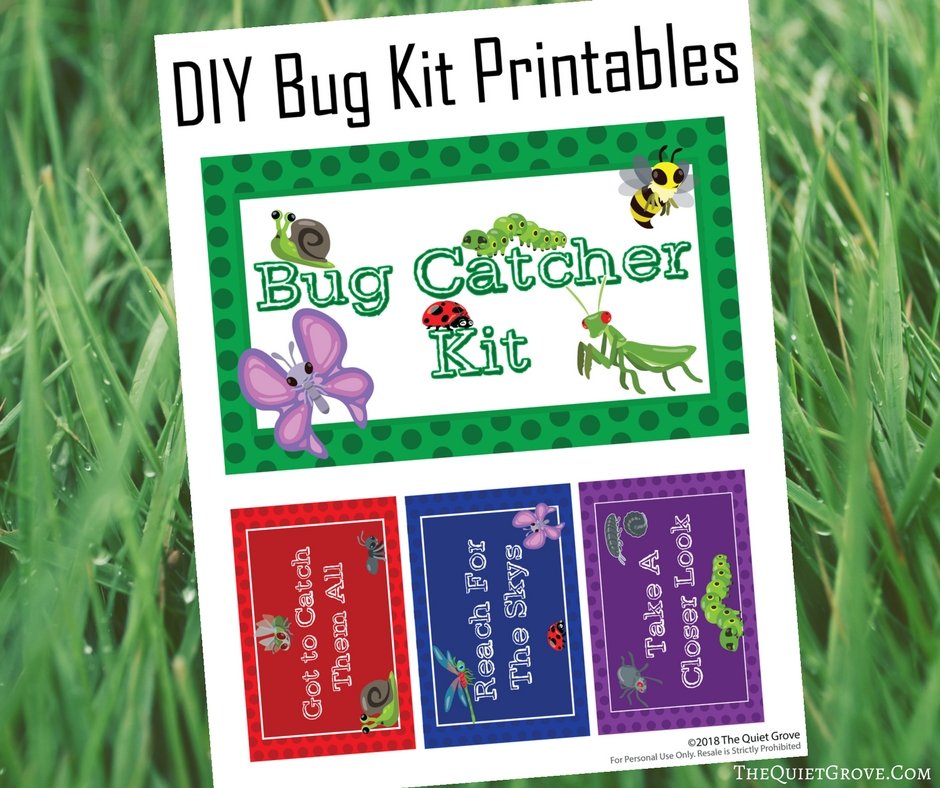
Cut labels out and then attach to the basket and kit items with string or Ribbon.
**Bug Catcher Label –> Basket
**Reach for the Skys –> Butterfly Net
**Got to Catch Them All –> Big Containers
**Take a Closer Look –> Magnifying Glass
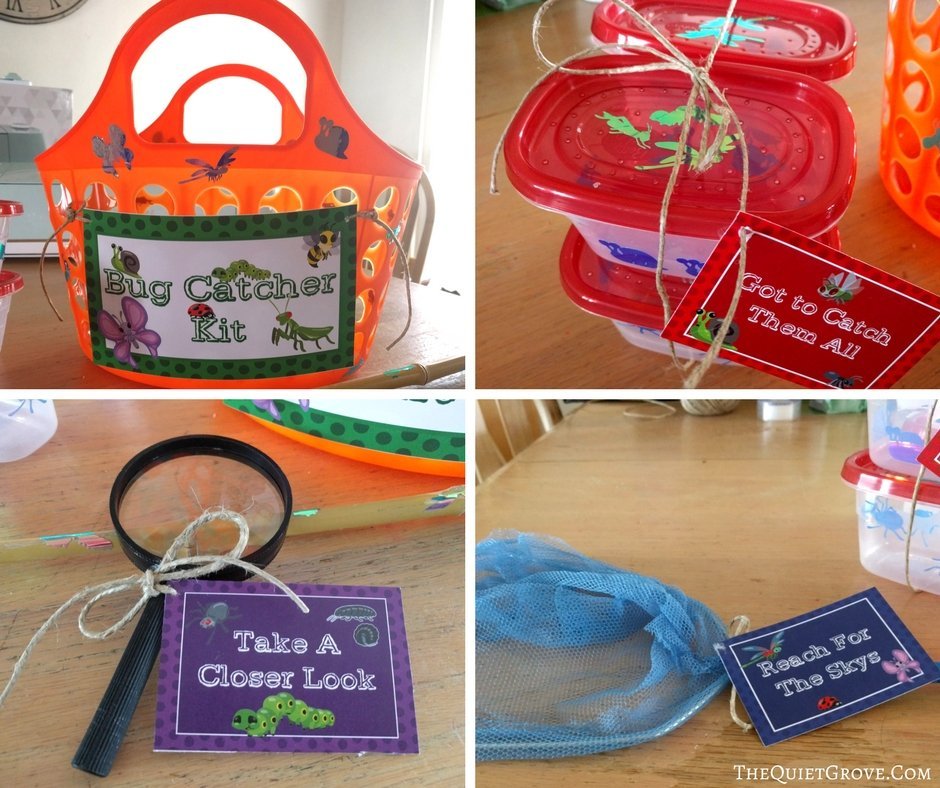
Seriously my kids were over the moon with their new bug catching kit and immediately wanted to go outside to use it. I am hoping it will provide hours of outside fun for my kids.
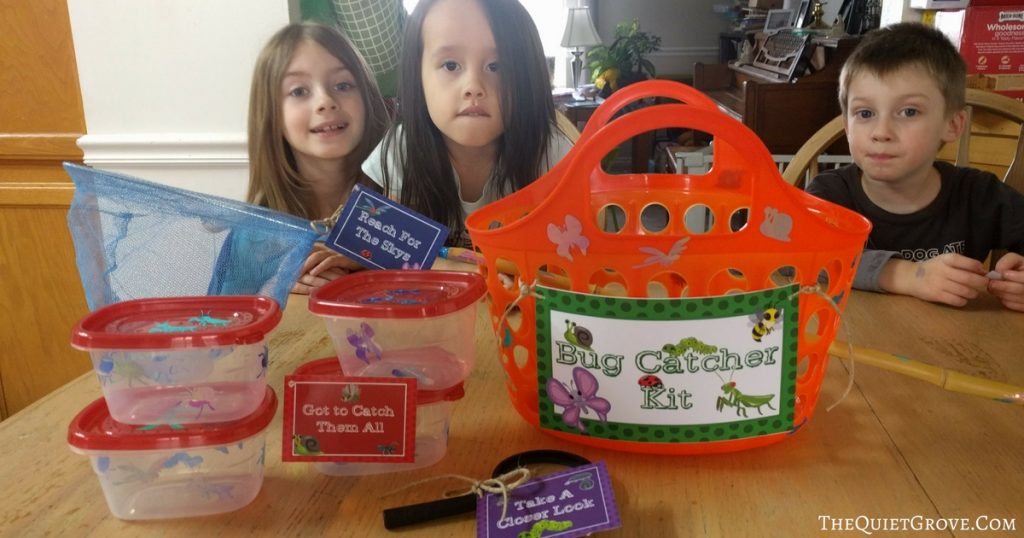
Catching A Lizard
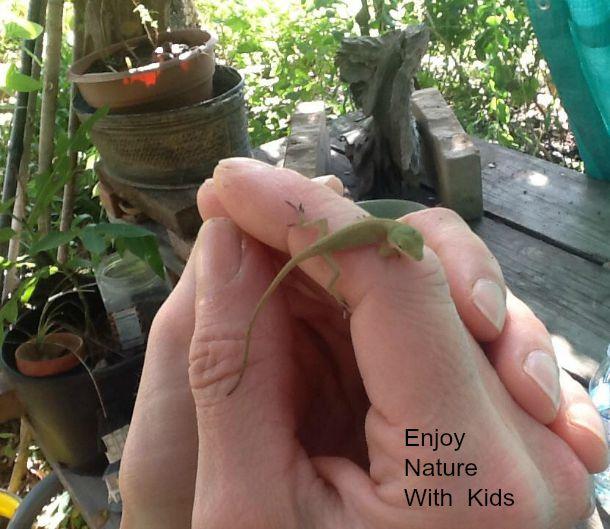
Do you remember catching lizards when you were a kid? Remember? This was not something that parents taught us how to do, instead kids back then were more likely to teach their parents this skill. Lizards are FAST and they hide really well. I was the oldest kid in my family. My little sister, named Scarlet, was a real go getter when it came to catching lizards, she was 7 years younger than me, and I had “grown up” into a very “mature” 12 year old, so I was not perhaps amused with running after lizards. Scarlet, on the other hand, she was a diligent and faithful hunter of the lizard, on a daily basis it seemed, after school.
I can still see those little legs white with baggy stockings loosely gathering around her ankles as she darted here and there. And I can still hear the gasping for air, as she giggled with anxious excitement. I had to restrain myself from bursting into laughter as I watched her spring impulsively into a lunge upon the poor little reptiles, with no care as to whether this meant scraped knees or palms or elbows. Who could feel pain, when the intense joy of catching a lizard would far outweigh the potential for a having a collision with a neighborly tree branch?
So, YES! Why not? Parents, though you may not find your child taking to this predatory sport on his or her own, what is to stop you from doing this wildly playful oldie but goodie!? If you let the kid in you come to the surface once in a while, an activity like this will likely raise up the dormant joy in nature that is inside us all. Before you realize it, you may find yourself chasing the lizard with no remembrance to your adult mannerisms, as they will quickly be abandoned for the adrenaline rush you experience when you catch a lizard.
How To Catch A Lizard In Your Backyard
If you want to get your kids outside to PLAY, but they don’t seem to take much interest in the outdoors, see how they react when they see YOU trying to catch a lizard and lunging about like a tiger after its mid-morning snack! If that doesn’t get them rolling in laughter, your kids are just sticks in the mud! For which the only cure will be MORE time outside!
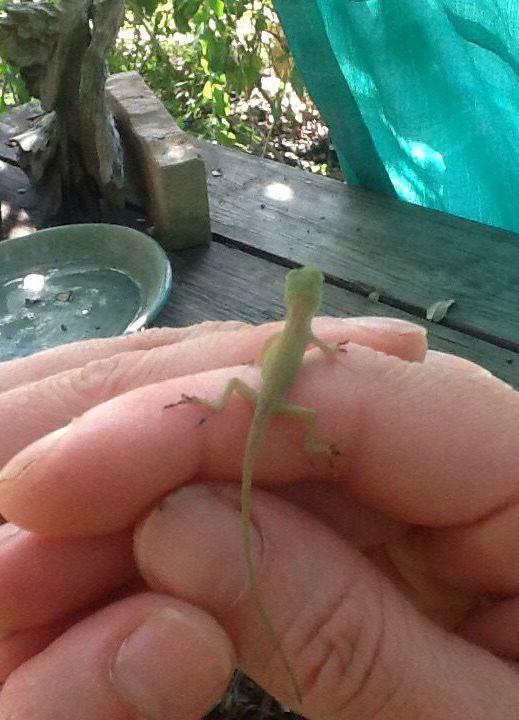
Keep these lizard catching tips in mind. You may want to do a little research on lizards common to your area before you begin. Make sure your child releases the lizard after they catch it and observe it for a short time. Also, be sure your child is gentle so that they do not hurt the lizard, after all, lizards are small and a bit fragile. Try not to grab the lizard by the tail so that they don’t loose their tail as it is an important part of their self defense. I just use the lay in wait and sneak up and grab the lizard method but there is also a grass lasso technique!
If you don’t successfully catch a lizard, don’t worry, you can always try again! In the mean time you could try some making some lizard crafts or lizard treats together!
Frog Hunt
Ribbit, ribbit. Go on a frog hunt to check on these friendly amphibians. Dinosaurs became extinct (or died out) some 65 million years ago, and many scientists believe frogs could be next to go. How are they doing where you live? Try this easy outdoor activity for kids to find out.
What You'll Need:
Access to a pond or shoreline
Boots or shoes to handle muddy banks
Step 1: Take an afternoon to go where the frogs should be at your local pond or shoreline.
Step 2: Watch for hoppers in the shallow water.
Step 3: Think afterward about what you saw. Do you think the frogs in your area are starting to disappear?
Go to the next page to learn about several easy forts that your kids can make with only a little help.
Frog Catching: How-to and Tips
By Emily Nast
My family spends as much time as possible outside during all seasons, but spring and summer are our favorites because of swimming, camping, baseball, and frog catching! We go on a short hike on a local trail and the boys have fun getting dirty and seeing how many frogs they can catch. My oldest son is 10 and we have been doing this with him every year since he was 3. My youngest son has gone frog catching with us since before he could even walk!
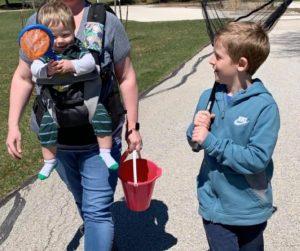
Even if the idea of frog catching sounds like something disgusting that you would never do, please continue reading! I think it’s important for parents to give their children a variety of experiences whether it is something you enjoy doing or not. I help hold the nets and buckets at times, but other than that I would never have to touch a frog if I chose not to. It is something I enjoy doing with the boys, so I don’t mind catching frogs with my hands and getting dirty. Frog catching keeps my boys active outside because we always walk on a trail while we do it. It is one of many things our entire family enjoys doing together and it was fun to do during safer at home when the only place we could go was outside!
I have put together some information that I hope will help you try frog catching with your children. I think it is important to mention that we spend a lot of time in nature and we have never hurt or killed frogs, used them as bait, or kept them in containers for long periods of time. We have taught the boys safe ways to hold them and have established clear guidelines for keeping them in a container. No frogs have been harmed in the last 7 years of frog hunting!
Equipment-
Nets: It is not completely necessary to have nets, but frogs can be hard to catch with your hands (especially for younger kids). We use 2 different sizes of nets. My boys each have an extendable fishing net (affiliate link) and also a short-handled net.
Container: This can be as simple as a gallon ice cream bucket with slits cut into the cover. It can be any kind of container with small holes for air. We use a creature carrier (affiliate link) that has a light, but we have also used collapsible sand buckets and ice cream buckets.
What to wear-
I suggest dressing in clothes that are appropriate for the weather that can get dirty and possibly wet. I don’t usually make the boys wear swim trunks, but I do have a couple sets of clothes (I call them “creek clothes”) that they can wear if we know we are going frog catching.
Appropriate footwear is important since you will be getting wet. Since my children walk in the water most of the time I usually make them wear boots so more of their skin is covered. This prevents them from getting cuts from sticks that are in the water and it also keeps their calves free from leeches, which are never fun to pull off! If you are only going in shallow water areas old tennis shoes are fine.
I personally don’t let my boys wear sandals if they will be going into the water even if they have a back because sticks, rocks, etc. can still get under their feet. We have also been to places where there is shattered glass on the rocks or on the side of the water which we obviously try to avoid, but we never know what is under the water.
Frog Catching Steps-
1. Find a good area of water that is less than 2 feet. Puddles, ditches on the sides of trails, shallow creeks with little water movement, and rivers have been places where we have found the most success.
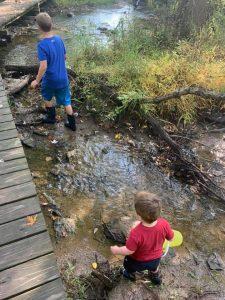
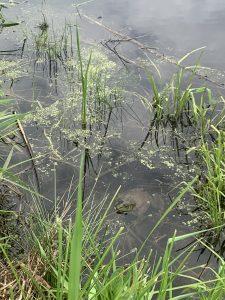
2. Look for eyes popping out of the water. Also, watch for any bubbles or movement in the water. Listen for croaks and follow the noise if you’re having a hard time seeing them.
3. Get your net ready and make sure your container has some water in it.
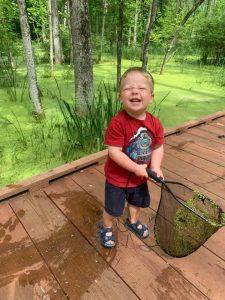
4. Slowly and quietly walk in the water or on the shore until you are about 2 feet or less away from the frog.
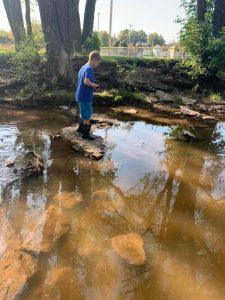
5. Scoop the net towards you or to the side to catch the frog – never scoop away from you. Note: sometimes it is just easier to catch them with your hands. If this is the case, scoop up the frog and carefully place your hand over it until you can get it safely in the container.
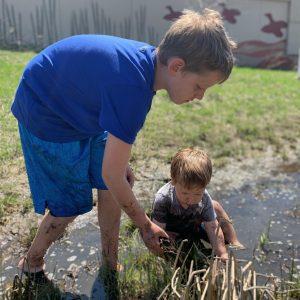
6. Place the frog in the container or carefully hold it. I suggest only holding it if you know how to properly do it and only for a few minutes. I make my boys hold them gently around the body. Although this picture looks silly, I promise he is holding it very gently!
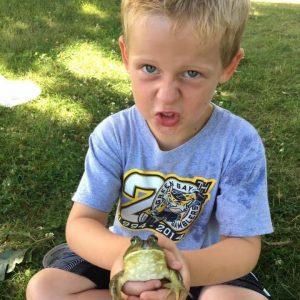
7. Once you have shown off your catch and have talked to it, named it, taken pictures with it, etc make sure to gently release it back into the wild. I let my boys keep them in the container for 5-10 minutes before releasing them. Do not throw the frogs- gently dump the bucket on the shore and let them hop or put them back in by hand. Make sure to release the frogs where there is some water.
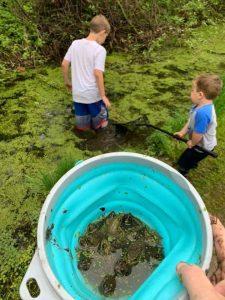
Best local places to go frog catching-
Sensiba State Wildlife Area – we usually see several from the boardwalk and they are also all over the shorelines. You may see bullfrogs bigger than the size of your hand, but they are very hard to catch!
Barkhausen Waterfowl Preserve – we usually start at the pond right by the Interpretive Center and then follow the Woodcock trail (blue markings) and there are several places to find frogs along the way.
Mountain Bay Trail in Howard – specifically between Spring Green Park and Pinecrest Rd
Deerfield Docks Park – we haven’t caught many in Duck Creek or the Bay, but there is usually water on the trail leading under the highway where we have caught a lot
Fonferek’s Glen Conservancy Area – we have found several here on our walk through the creek to get to the falls
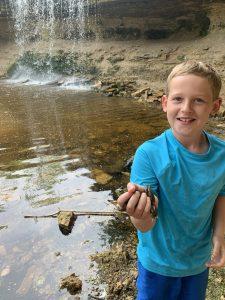
Additional tips for frog catching-
The best time of day to catch frogs is a warm, humid evening when it is still light out. We have found success during all times of the day, however. Last year we went out between 9-11 am most days and never had a problem finding them.
Multiple kids = multiple nets and buckets. I learned last year that each boy needed their own bucket with “their” frogs to hold or there were arguments.
No hand sanitizer, bug spray, or other chemicals on your hands that can be absorbed into the frog’s skin
Always have extra clean towels in the car to wipe off with and even a change of clothes just in case. We also use baby wipes to wipe down before we can get home and shower or take a bath
If you don’t enjoy frogs, water, getting dirty, etc at least give your kids the chance to experience it and don’t make it out to be something gross or unenjoyable! It is OK to allow our kids to try new things that we are 100% certain we have never enjoyed.
If your children love frog catching, check out the Summer Camps Guide! My oldest son attended a day camp at Baird Creek titled “The Creek and Its Critters” which he absolutely loved!
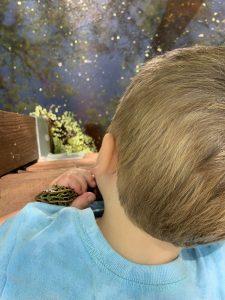
“FLY FLY” Catching-Mt Falcon
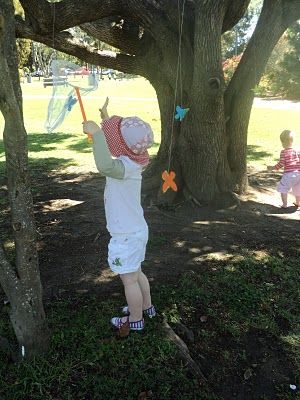
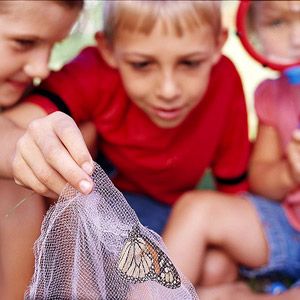
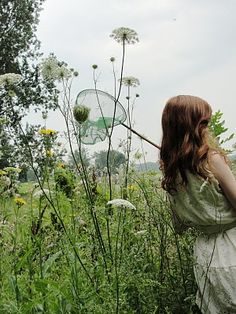
Not everyone has a butterfly net, right? So you might be wondering how to catch a butterfly without harming it, or without a net. I had no idea it was so easy.
Grab a q-tip or cotton swab.
Dip it in juice or Gatorade (sugar!).
Hold near a butterfly bush or where there are butterflies.
They will land on a q-tip or other similar implement with the sweet juice on it. It’s really that simple.
How to Attract Butterflies to Your Yard
Butterflies, like any other creature, need:
nectar (food) sources
hostplants
cover/hiding sources
I knew this for my birds, why not my butterflies? We must have half a dozen or more butterfly bushes in our yard. I guess I never noticed that they just flutter by and move on.
Here is the complete list from Folk’s, of which plants they recommend.
I am both overwhelmed and reassured by this list because I do already have some of these in our yard. Folk’s also has a recommendation for planting times on its website. We are pretty good about identifying birds, since we have active bird feeders. Now I’m excited about learning to identify butterflies.
How to Grow a Butterfly
During all this stay at home time, I became an accidental butterfly farmer. It started with “worms” that I found ALL OVER my parsley plants. I thought they were a pest, and I posted a photo in my gardening group.
C’mon, if you didn’t know any better, you’d think this was a pest, right?
Thankfully my gardening group is smart, and right away they said DON’T KILL THOSE! Turns out they are butterflies. So I grabbed a few and stuck them in an old hermit crab container.
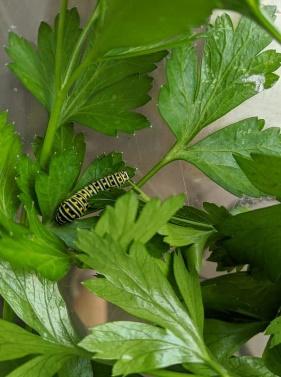
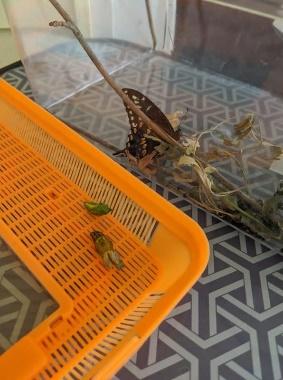
My chrysalis. One hatched as you can see, and the other hatched a few days later.
I put a stick in there so that they would have something to hang from with their chrysalis. They did not use it, choosing the lid to the container instead.
Each one took 2-3 weeks, I checked it daily morning and evening. When it hatched, I opened the lid and it flew away.
I do not like fennel, so I do not grow it in my garden. But in addition to parsley, they apparently like fennel. Others have had success with your gourd/squash type plants like zucchini, pumpkin and watermelon. I like parsley so I’ll stick with that. It was fun to watch him eat and eat and eat, before he formed his chrysalis.
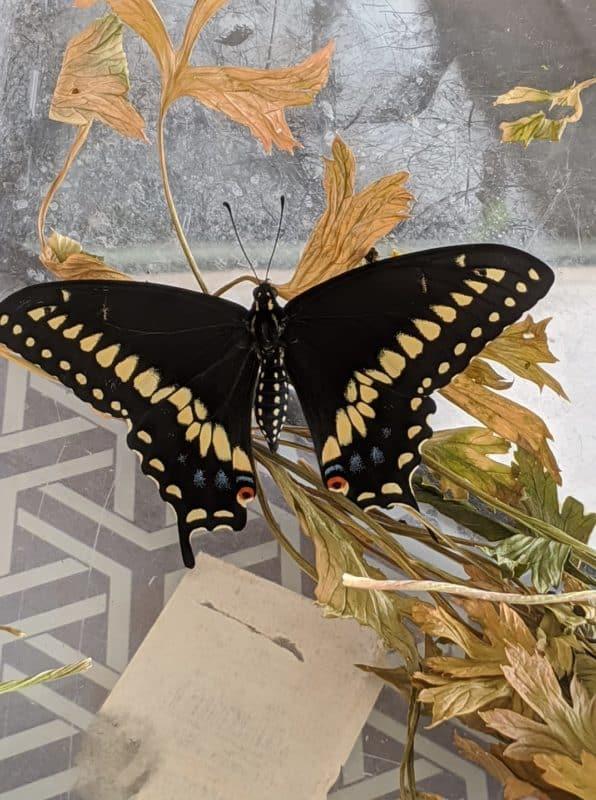
CATCH THE BUG!
Posted by Our Country Home
Text | Kristin Barron
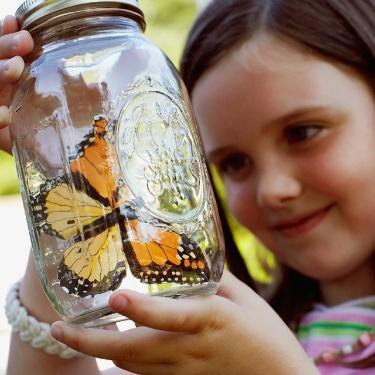
Why not start the spring season sightseeing in your own backyard? Start by introducing your kids to some of the interesting insects common to the Upper Delaware and open a door to discovery and appreciation of our local natural history. “Bugs,” from luna moths to spittle bugs and even those pesky potato bugs, can bring the adventure of the wild, teeming, natural world right to your doorstep.
How do you begin? It’s as easy as turning over a rock. Children as young as three and four will spend hours doing this, engrossed in the excitement of finding a glossy, black field cricket or the scurrying world of an ant hill.
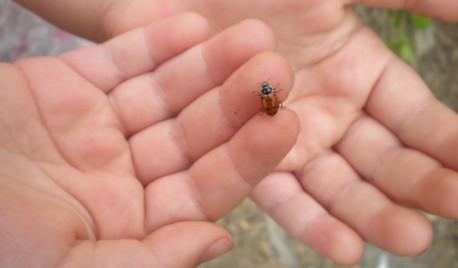
Summer light show
Children of all ages love chasing after fireflies—which are actually beetles. The whole family will enjoy watching the firefly light show and children are especially delighted when they hear that fireflies (aka lightning bugs) are conversing with each other by means of their own code of flashing lights.
Collect a few fireflies in a jar to create a firefly lantern, then show kids how to hold the jar upright in a bowl of warm water—the lantern should become brighter because fireflies always shine brighter in warm weather. Try dipping the jar in cold water to see if the firefly lights will fade.
Each species of firefly flashes in a specific pattern. Males, looking for a mate, will fly around flashing a greeting signal for the females on the ground who will respond with their own answering signal. Kids can try to mimic the flashing lights with a small flashlight and see if they can trick a firefly into coming to them. Children can also try making their own “flashlights” by wearing a net bag full of fireflies tied to their wrists—as is done in some parts of South America and the Caribbean. Amazingly, there are even stories of doctors using firefly light to perform emergency operations. At the end of the fun, be sure your kids release the fireflies unharmed.
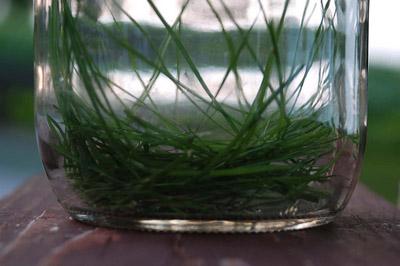
Night fliers
Other night fliers, like the spectacular luna moth with its lovely, long wing tails and delicate green color, are wonderful for teaching the life cycle (metamorphosis) of the insect order Lepidoptera, which includes moths and butterflies.
Adult luna moths emerge in early spring from cocoons and lay eggs on a number of different food trees such as hickory, oak and walnut. The caterpillars eat and molt until they are ready to make a cocoon of silk and leaves and then emerge as second-generation adults in early summer.
One way to interest children in these beautiful moths and other nocturnal insects is to purchase a blacklight that includes a fluorescent bulb which emits ultraviolet rays to attract these intriguing insects. (A specific blacklight made for insects is needed.)
A trip to a local pond or stream might be a good way of introducing kids not only to frogs and salamanders but also common aquatic insects such as caddisflies, water striders, whirly-gig beetles and, of course, dragonflies. Female dragonflies lay eggs in water where the nymphs develop, feeding on other aquatic insects. After several growing cycles, they leave the water, the skin splits and the adults emerge. Look for the cast off skins of the nymph stage of the green darner dragonfly clinging to rushes and cattails at the water’s edge.
Kids will also notice the nymph stage of the froghopper (often called “spittlebugs”) hiding in a mass of frothy bubbles at the stem of a blade of grass. Open the mass of bubbles with your fingers and you are likely to see a tiny, frog-like insect inside. Eggs are laid on plants in the fall. Nymphs emerge in spring, form small masses of bubbles for protection and feed on plant juices. Adults (tiny hoppers who jump from plant to plant) emerge after several molts.
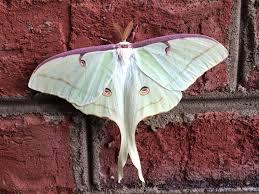
In the garden
Of course, one of the best ways to show your kids the natural world is to grow a garden. Even “pest” insects such as cabbage white butterflies and potato bugs provide an opportunity for learning. If you are growing carrots or dill or parsley (all members of the carrot family), you might be able to raise black swallowtail butterflies. If you find the green, yellow and black larva eating your herbs, you can easily collect them to raise in captivity. Feed caterpillars from the food plant you found them on and wait for them to spin their pretty, spiny chrysalises. (The word chrysalis has its root in the Greek word for gold, Khrusos.) Black Swallowtail larval stage is from two to three weeks and pupa stage is about 10-20 days.
You can use a large jar (with air holes punched in the cover) or any covered cage or aquarium to raise the caterpillars in. Cover the top with gauze or a fine screen mesh so that the caterpillars will get air but won’t be able to escape. Provide them with fresh food from their host plant and watch them grow. You may also want to provide twigs or small branches for the caterpillars to crawl on when they begin to spin their chrysalises. It is always fun to release the butterflies after they have hatched and are ready to fly free.
Many elementary schools make a project out of raising monarch butterflies each fall which, amazingly, migrate to Mexico to overwinter. As one of our most recognized and loved butterflies, the monarch is one of a host of insects that feed on milkweed plants. Find their striped caterpillars on milkweed on local roadsides or a wide variety of habitats including weedy fields and meadows. Locally, kids can get involved in studying the life cycle of monarchs at the Butterfly Barn in Milanville, PA which hosts a monarch program in August.
Finally, where would weather prediction be without the banded woolly bear? The woolly bear is the immature larva of the Isabella tiger moth. The caterpillar spends the winter months in hibernation. In summer, the caterpillar feeds on dandelion and plantain, then spins a tan, hairy cocoon before hatching as a tan colored moth.
A scavenger hunt is a great group activity that kids of any age will enjoy. You can play in your backyard or take this game to a park.
Before they head outside, have the kids make a list of natural elements that are commonly found in nature such as twigs, leaves, blades of grass, stones, flowers, etc. Make two copies of the list, divide the players into two teams and hand them each a list along with a basket for their found objects.
The first team to return with all of the items on the list wins the Earth Day scavenger hunt.
Bug Hunt
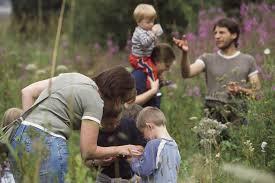
Bug catching kits can be found at many craft and discount stores. You can also have kids make their own bug catcher for a fun craft project.
With the kit, let your little nature lovers go out into the grass to see what kind of bugs they can locate and capture. Help them observe how the bugs look and act for a while and pass on some knowledge about the good things bugs do for the environment around you. When you're done, set the bugs free!
Night watching
You may be surprised how many animals live near your house -- but you might have to wait for nightfall to see a lot of them. Night watching will show you how to spot those animals that come out at night.
What You'll Need:
Flashlight
Red cellophane
Rubber band
Woods, parks, fields, and other places are often full of animals we're not aware of because they come out at night. If you are quiet and still, you can see some of these night creatures.
Go with an adult, and find a safe place in the woods where you can sit and watch. Make sure the spot is quiet and well away from any bright lights. During the daytime, you can remove sticks and rocks, so the spot will be more comfortable. You can also lay a folded blanket out.
Before going out, cover the front of a flashlight with two layers of red cellophane. Red light won't affect your night vision, but it is hard for most animals to see. Go outside and wait a few minutes for your eyes to become adjusted to the dark.
Turn on your flashlight and go to your spot. Allow yourself at least a half an hour to sit. Listen carefully for any animal noises. If you hear something, you can slowly move the beam of your flashlight toward it, but try to see it without the aid of the flashlight first.
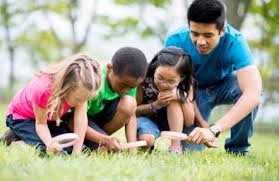
Take an Animal Census
A census is a count of how many people -- or animals -- live within an area. Governments take a census to count how many people live in the country. You can figure out the animal population of a spot near you when you take an animal census.
What You'll Need:
Wooden stakes or sticks
String
Paper
Pen
In an open field or wooded area, use four stakes or sticks to mark off a square that is one meter on each side. Then run string around the four sticks to make an actual square.
Take a census of all the animals inside the square. Look carefully to make sure everybody gets counted. Look under rocks. (Be polite and put the rocks back when you're done counting.) Look in any bushes or trees.
Make a record of your census, telling how many of each kind of insect, spider, and other animal you found living there.
Walk Like the Animals
This is a fun activity to do with a group of friends at a park or beach. Have races where you walk like the animals.
What You'll Need:
Group of friends
Once you've gathered all your friends together, decide on a starting and finishing line, and try the following animal races:
Crab Race: Racers are on all fours (hands and feet), and must move sideways.
Chimp Race: Racers hold their ankles with their hands or drag their knuckles on the ground.
Frog Race: Racers squat in frog position and hop.
Can you think of other animals to imitate in your races? Let your imagination run wild -- and may the fastest animal win!
Water Watch
There are three things our favorite animals need to survive -- shelter, food, and water. Try this water watch activity and observe animals drinking from bowls you set out.
We can't always provide shelter; moms and dads don't always feel good about inviting sparrows inside for a good night's sleep. Food can be iffy. Water, though, is a universal need, and it's one thing animals need that we can almost always supply.
What You'll Need:
Old buckets, pie pans or bowls
Water
Set out old bowls or pie pans of water wherever you think an animal might want to drink. Then make sure they are full -- check them every day.
Your creature pals will thank you every time they wet their whistles.
Who's Out There?
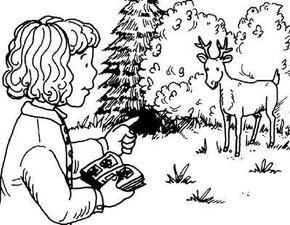
Find out "Who's Out There?"
If you've ever awakened in the middle of the night and heard strange animal noises coming from 'out there,' you know that you are not alone. Find out who's out there. Go to the library, check out a field guide, and learn what animals live in your area. Then take a nature hike and see if you can meet some of your neighbors.
What You'll Need:
Reference book or field guide
Notebook
Pen
The best time to do this is either just after it gets light in the morning, or at dusk. Most animals are more active at those times than they are during the day. Watch for signs of animals, such as paw prints or animal homes. Keep a journal of your animal sightings.
Try this activity at different times of the year. Do you see different animals during different seasons? When do they gather food or build new homes? When do you see baby animals?
Sensory Play & Discoveries at the Local Pond
Sensory Discovery Zones
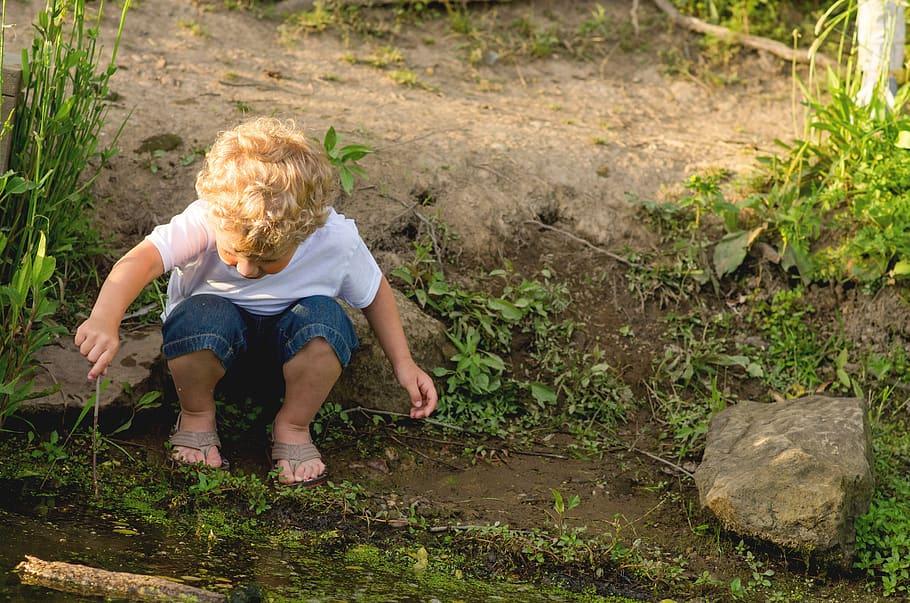
Ah, pond life. The simple life. But what looks like a quiet, still— even stagnant— place on the surface is actually a busy ecosystem brimming with life and so much nature to take in.
Ponds are sensory discovery zones. A child can wade in the waters of a pond, explore the mud between their fingers, listen to the calls of frogs, see dragonflies exhibit a multitude of behaviors and feel the sunshine on their face. Ponds are great for teaching children about wildlife and the different stages of the life-cycle of small creatures such as frogs as they unfold in natural surroundings. True reality entertainment.
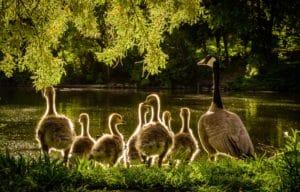
Let's start with what defines a pond. Ponds are quiet bodies of water so shallow that rooted plants grow completely across it. A pond's bottom is usually covered with mud and its water temperature is fairly uniform from top to bottom and there is very little wave action. Sounds like a good place to explore!
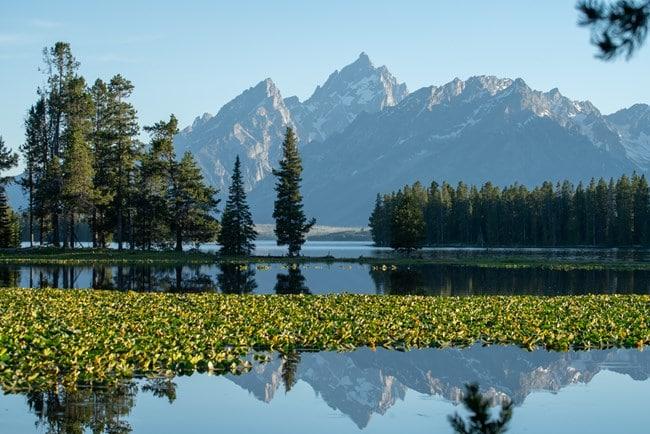
Just remember that not all ponds are created equal. Some ponds are created by streams— mountain-stream ponds. Others are created intentionally such as farm ponds There are also mountain ponds, formed by glaciers, cypress ponds and bog ponds. You can learn a ton about your local pond together with your child.
First, make sure you head out prepared.Bring a bucket for sampling, a water scope, a net for catching swimming or flying critters.Whether your child prefers to head in with their bare feet for a truly sensory experience or wear water shoes, warn them that ponds can be slippery places! Rocks, mud, algae, and grass combine to create quite the slippery formula. And a child can drown in just a few inches of water so be vigilant. Always keep an eye on your child when exploring ponds. Be sure to check the wading area for slippery or sharp rocks and drop-offs.
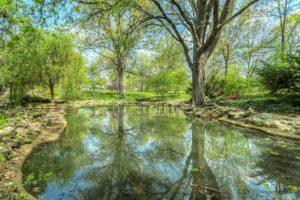
When you first get to the pond, walk around it and take it in together.
Once you’ve done a walkaround, ask your child to find their own observation spot and have them spend a few minutes just watching. It can be anywhere they choose. Make sure they are within your eyesight. Don’t give them species to focus on or behaviors to look for. Just have them take in the big picture. Ask them to practice silent observation by keeping their movements small and their voices quiet.
After a few minutes of big picture observation, start zooming in on activity or critter that caught their eye. Ask your child to focus on one thing they noticed and tune into it. What is it? How is it using the pond? Who is it interacting with? What does it do in the pond? What does it eat or where does it shelter?
It’s amazing that the world right outside your home is full of opportunities for your baby to learn. All throughout the year, nature—even in a busy city—offers new colors, textures, scents, and shapes for your baby to experience. Take a stroll around the neighborhood or explore at a local pond with your baby, enjoy the fresh air, and collect some natural souvenirs for an outdoor treasure box.
Here are simple tips for your nature walk:
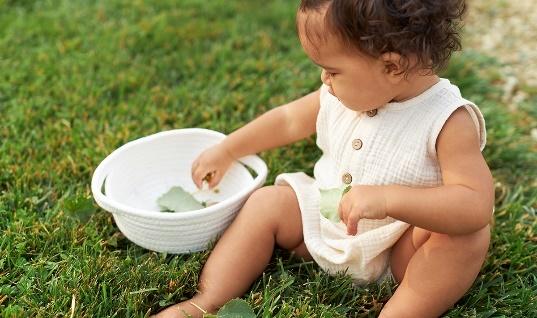
Allow your baby to get close to the ground and examine natural details—different types of grass, bark, moss, leaves, stones, pinecones, and soil may catch their attention. Collect one of each item into a container or basket.
Hunt around for some bugs! Talk about which insects crawl and which one’s fly.Look up at the sky and tell your baby about the weather and how it makes you feel (physically and emotionally).
Trees are full of lessons—help your baby feel the texture of the trunk by placing your hand over theirs and run them along the bark and count the other trees around you together.
Practice sniffing scents of flowers, grass, fruits, or berries in a garden if you have one.
If your child likes you to take photographs or create art outside, this is a great time to have them capture some of their observations for their Adventure Journal of the critters or other pond features such as plant life or the ripples on the water’s surface.
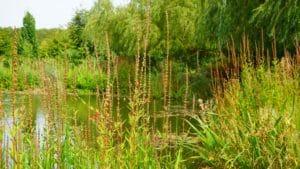
If you have an adventurous child, encourage them to engage more of their senses by experiencing the water, mud or get closer to the sounds of the pond. Ask them what they would like to touch: the fuzziness of a cattail, the gooeyness of mud, the sliminess of an algae-covered rock. Be sure to help them understand how to touch the parts of the pond they are interested in without disturbing the environment or hurting any creatures.
If your child really wants a full-on sensory experience, let them wade into the pond.
This is a great way for them to experience how the water temperature, while fairly consistent, does range from bottom to top with the colder, denser water settling at the bottom while the warmer water is at the top. Ask them if they can feel this on their own?
Another fun experience is to feel the bottom of the pond on their feet. As most ponds have a muddy bottom, this should feel good. But there are likely to be plants, some rocks and even some critters like snails and sponges down there. If they are intrepid, have them reach in and pick up some mud from the bottom. Bear in mind that some ponds can have jagged rocks on their bottom and some might have leeches in them. Leeches are found in shallow protected waters and are most active on hot summer days and at night. This nuisance critters are drawn to disturbances in the water near docks and swim beaches. To avoid leeches, swim in deeper waters off docks and floats. Leeches are mostly found in organic sediments or debris, so try to avoid these areas if leeches are known to be in the pond.
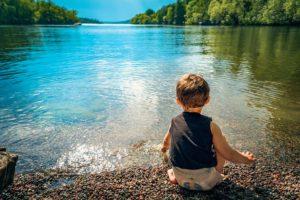
Pond water is a world onto itself! Have your child use their bucket to take a sample of the pond water and peer inside to see what they caught. It could be small fish, plants tadpoles, insects, or a whole lot of murky water. A butterfly or fishing net is also a great way to catch critters in the water or the air around a pond. Butterflies, dragonflies, and water insects love to refresh, eat, and drink on the water of a pond. Chasing these critters on the shore of the pond is a fun challenge for kids and one that not enough kids get to experience. Be sure they learn to be gentle when catching their critter. Once they take a gentle look, noticing the parts of the insect as well as its colors and patterns up close, help your child release the critter safely.
Let your and your child's imagination run wild as you explore this fascinating ecosystem together. Here are some more ideas for having fun exploring nature at a pond!
Exploring ponds with kids isn’t limited to the water. A butterfly net can help you capture amazing creatures such as dragonflies, butterflies, and other flying insects, as well as water insects. Chasing a flying insect is a great hand-eye coordination activity—plus, it’s just fun! And when my children do manage to catch a butterfly or damselfly, they love to examine their vibrant colors and fragile wings. Every creature is so unique and beautiful.
Fun Things to do or tell your baby about at the Pond
Find as many pond critters as you can with a Pond Scavenger Hunt.
Our free downloadable printable is here to help!
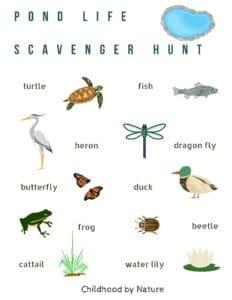
Observe dragonflies.
Dragonflies are also called Mosquito Hawks or Devil’s Darning Needles. If you think there is just one species of dragonfly, think again! There are around 400 species of dragonflies in North America alone.
Scouting turtles.
Turtles are pond lovers. They bask on rocks and logs to fill their body with warming energy. They scavenge dead animal and plant material and remove diseased or weakened fish, contributing to improved water quality and fish population health. In the spring, baby turtles (just tiny, mini versions of the big guys) are an absolute delight to find. Some aquatic turtles can absorb oxygen through the skin on their neck allowing them to remain submerged underwater for extended periods of time and enabling them to hibernate underwater. Look for turtle heads popping out the surface of the pond’s water. The soft-shelled turtle uses its long tip nose and nostrils like a snorkel to breathe underwater.
Look for and listen to frogs.
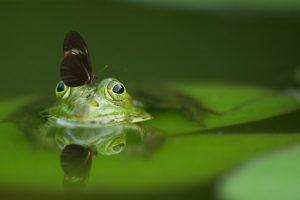
Explore Water Lilies.
Why do they float? What lies beneath the surface? How do animals use them? Learn more at home. Then, go Monet & create a masterpiece of your own.
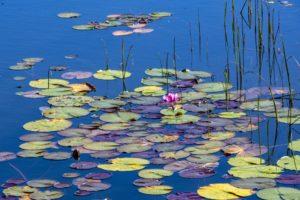
Go fishing.
Aim for an early morning or evening casting time, when the fish are most active. You also need to make sure you're courting them with what they want. Pond fish are attracted to sink worms, jigs, and shallow crankbaits. If you know your pond is full of catfish remember to add catfish-specific bait to your tackle box! When pond fishing with beginners or kids, it's best to bring along live baits. Night crawlers, minnows, crickets, and waxworms will attract several fish species in a pond. These live baits can be rigged on hooks in sizes from 8 to 4 depending on the size of the fish species you are targeting.
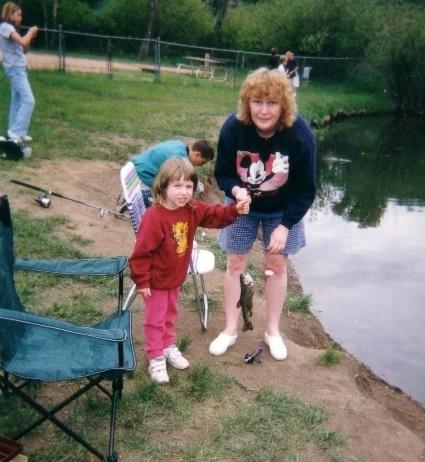
Hope was taught to fish almost as soon as she could hold the fishing pole. By age three she was baiting her own hooks and pulling in her own fish. She loved it. The photo above is her reeling in her first trout in Colorado Springs.
My family lives in the Finger Lake area so my grandfather taught all his grandchildren and great grandchildren how to hunt and fish. Those lessons included some of his own wonderful and wild fish tales. LOL They were fascinating.
😊 More information on Pond fishing
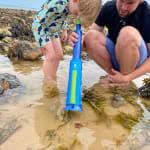
Bring along a water scope, or underwater viewer.
Ponds are home to many animals, plants and organisms, such as frogs, different types of fish, algae and amoeba. In fact, most plants and animals can’t survive without freshwater biomes. Water scopes allow us to have the opportunity to discover the world below the surface of ponds. We bought the Educational Insights one. probably when Hope was two. She still has the smaller piece at age 24. You can buy one or make one using these instructions here. Make one of these handy tools by sealing a piece of glass in a bottomless bucket or water-proofed box.
Feed fish.
Pond fish eat algae and other beneficial bacteria off the rocks and gravel in your pond. Wild koi (also known as the common carp, the domesticated koi carp’s ancestor) will readily eat aquatic insects, flies, algae, smaller fish, plants like water lily and water lettuce, snails, and frogs. Other pond fish are opportunistic feeders and will happily eat all sorts of plants and animals if they’re small enough to swallow! Although it’s not necessary, it can be fun to give your fish a summer snack from time to time. Pond fish will enjoy a little watermelon, orange slices, peas, and even Honey Nut Cheerios.
Make a magic wand out of cattails.
Feed waterbirds.
The age-old debate is whether it’s safe to give birds a snack to birds or not. In fact, bread is not the best food to give waterfowl as it fills them up without giving them the nutrients they need.
Bird experts recommend small amounts of grain such as wheat, corn or bird seed, plus fresh chopped greens like cabbage or spinach, as these will supplement the birds’ natural diet and help provide the birds with the necessary nutrients to keep them healthy.
